This time Isabelle chose a tour of the town of Cerreto d’Esi during the FAI autumn days. This is her post about it:
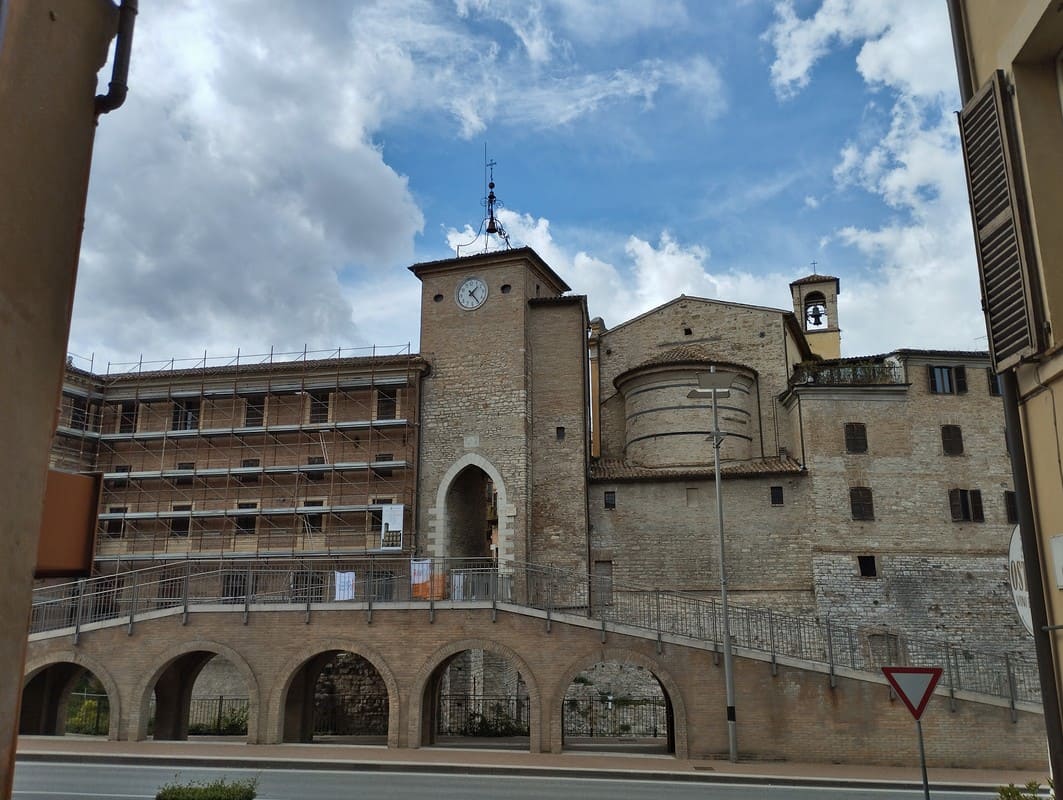
We regularly drive past it to go to Matelica or further south, but it has been years since I stopped there. Even though the first view of this community often intrigues me. In any case, the elevated bridge to the city gate is striking.
Parking is easy and free along the city wall or at the back of the station.

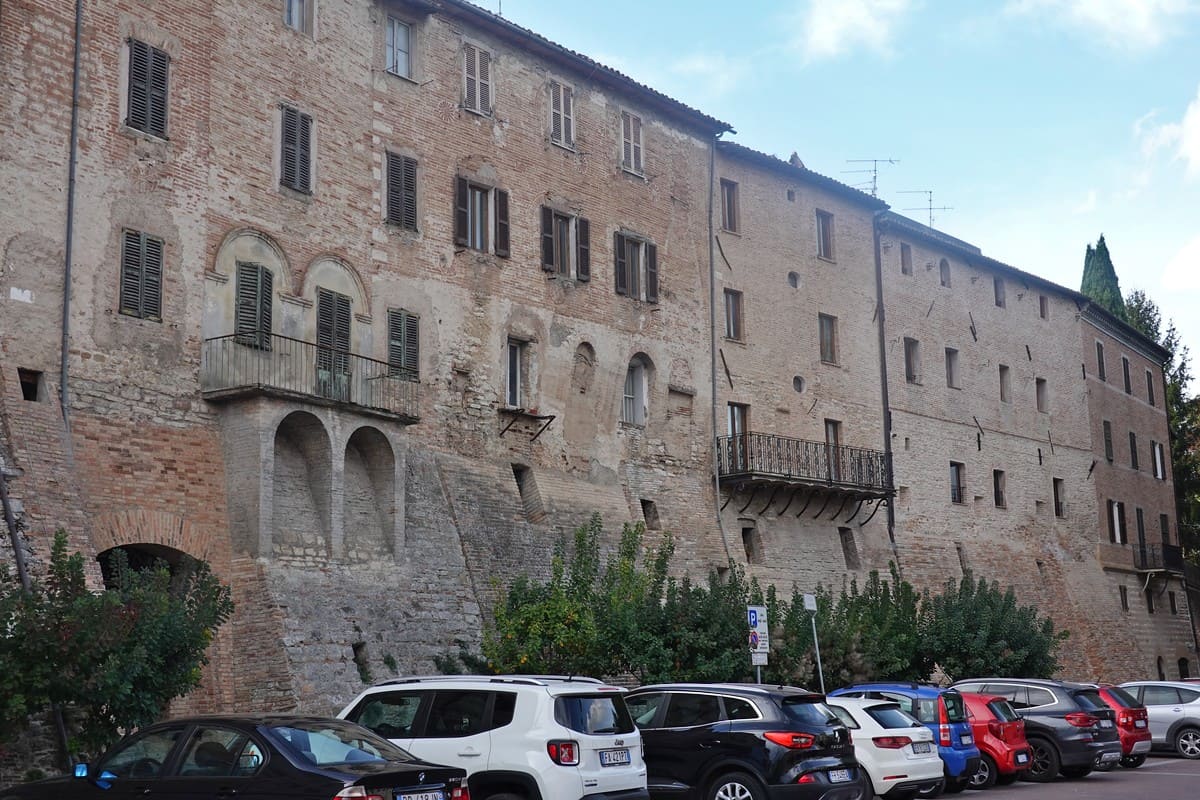
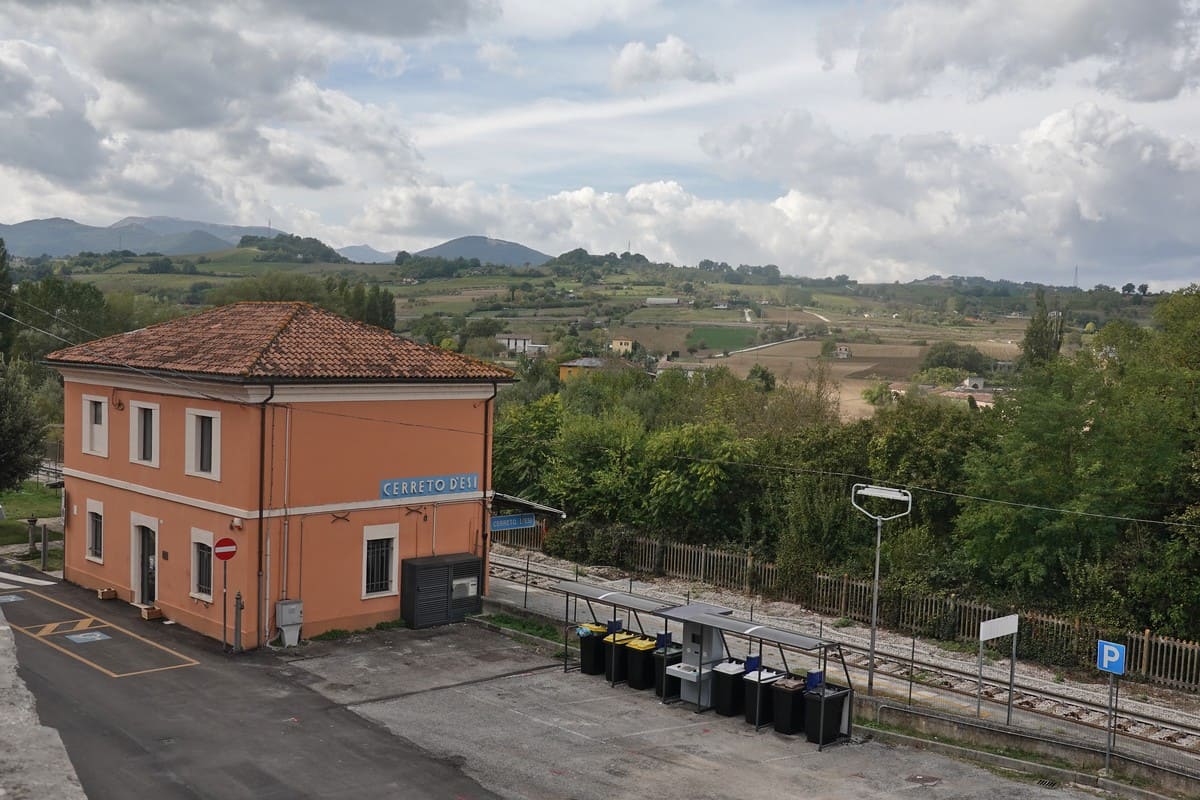
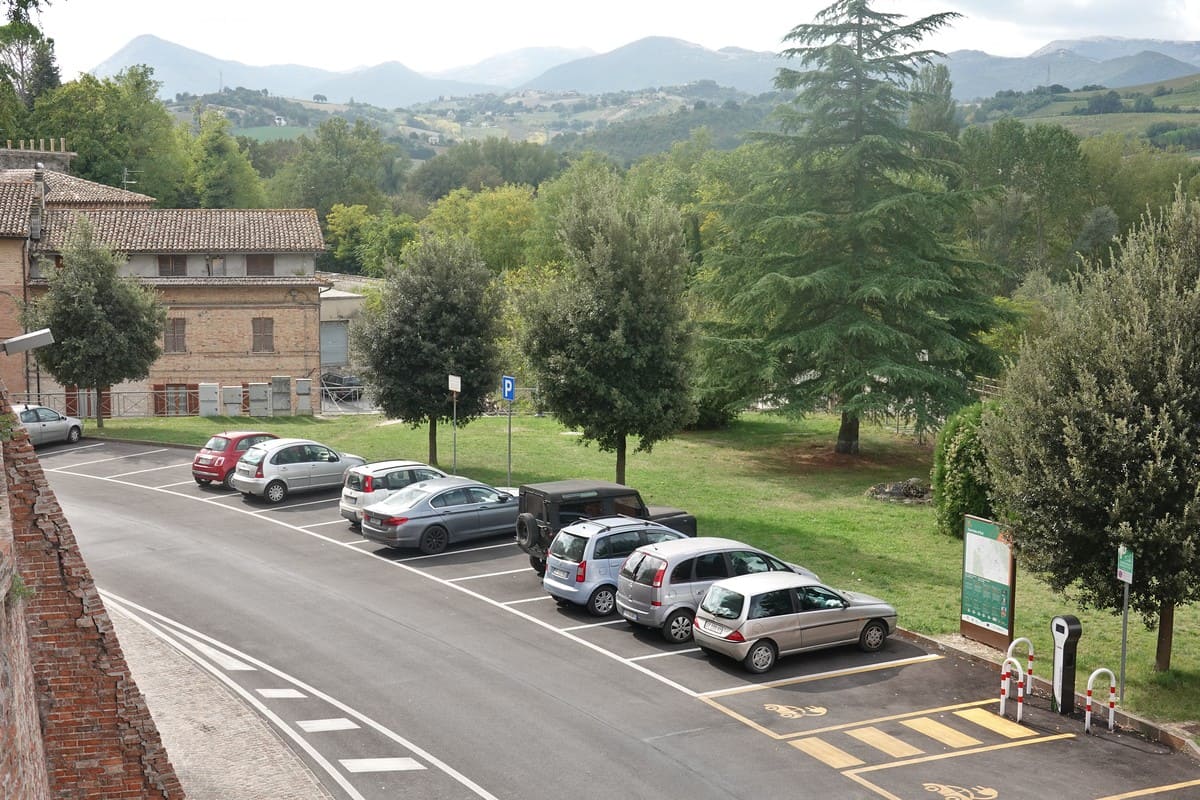
I stepped onto the bridge, where you can still clearly see the deep moat around it, over which the drawbridge once lay. Now part of the canal serves as an open-air theater.
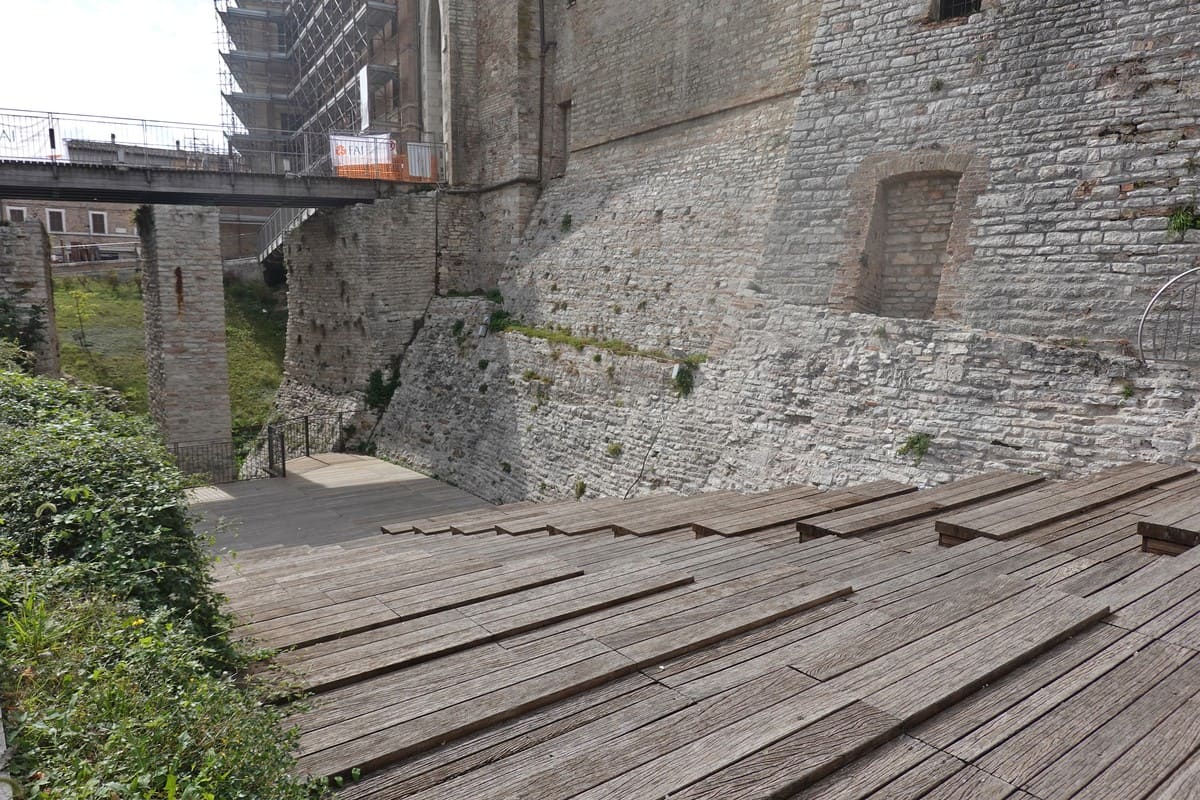
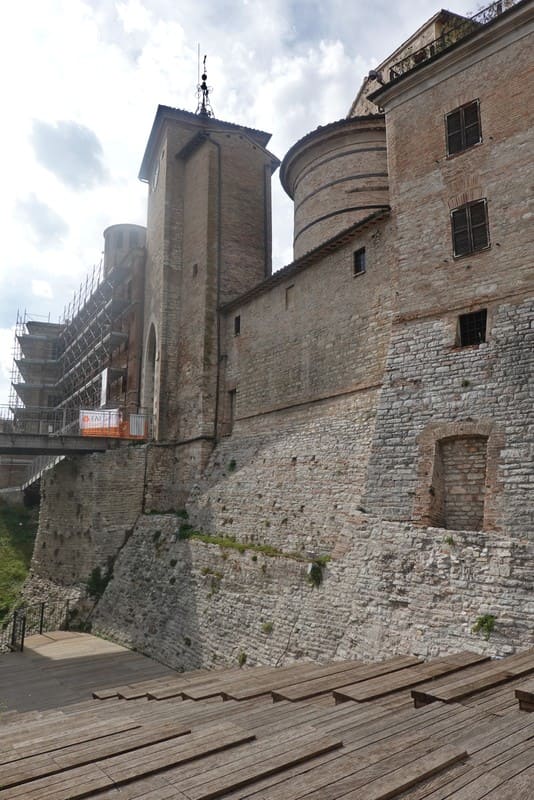
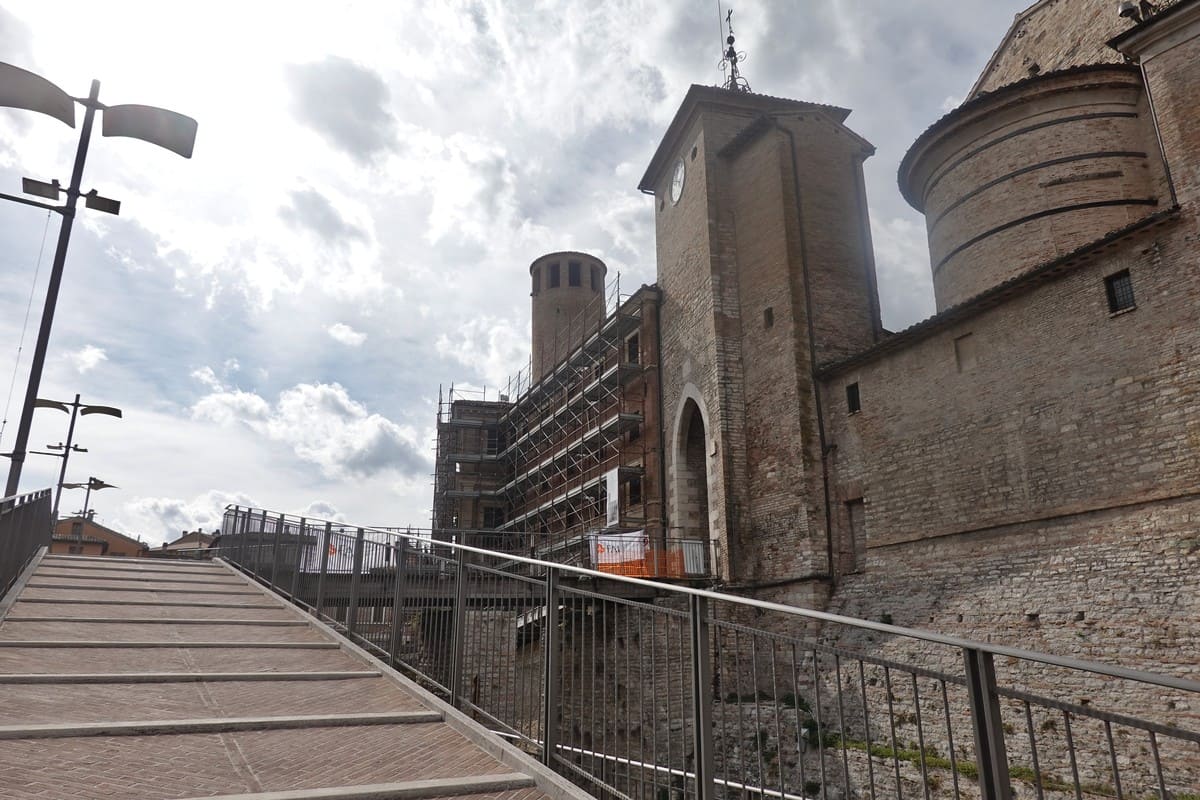


The porta Giustiniana is still the main entrance to the historic center. You then end up directly on the town square.

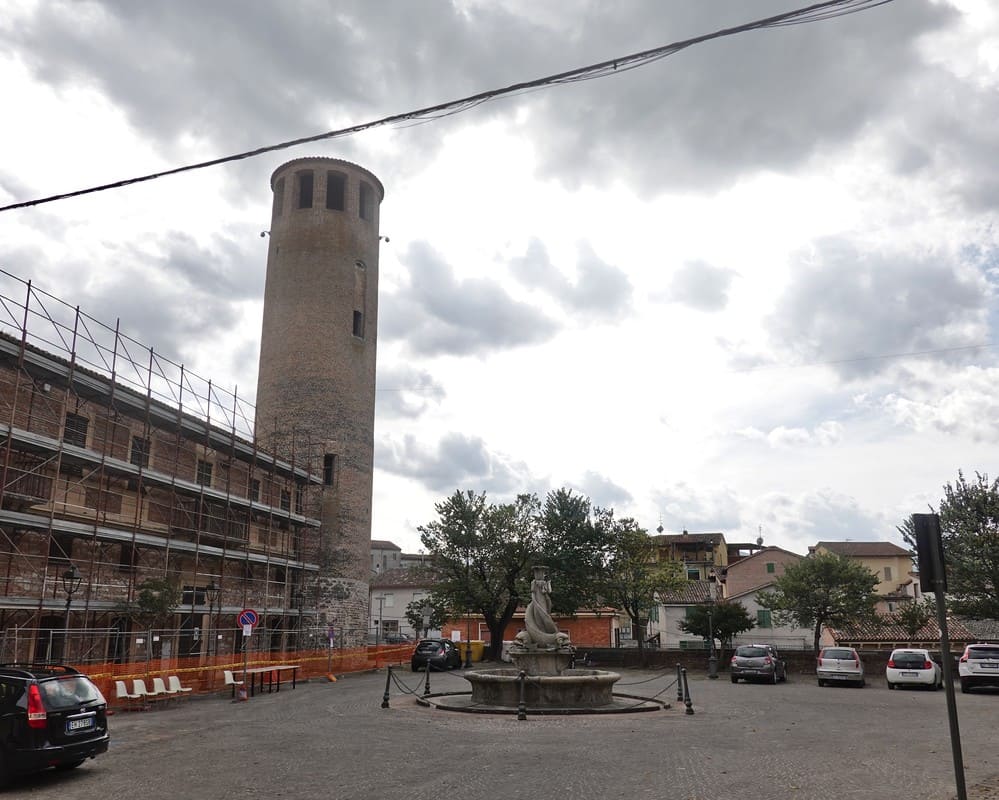
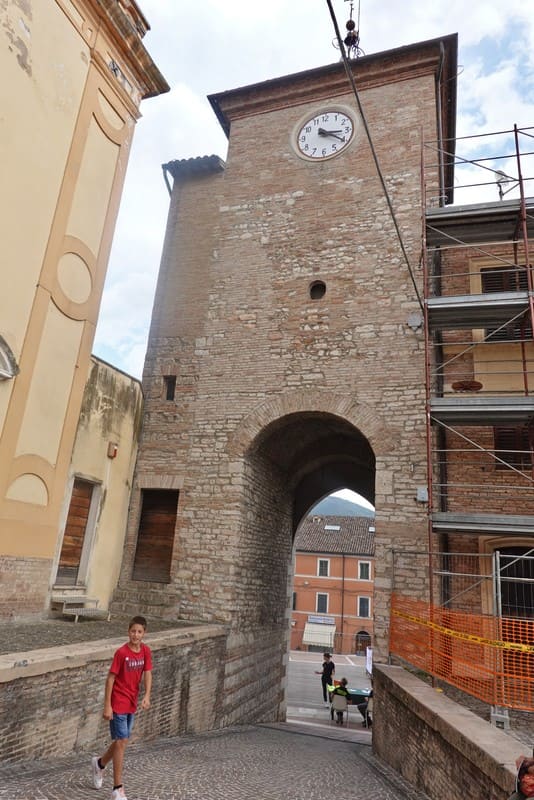
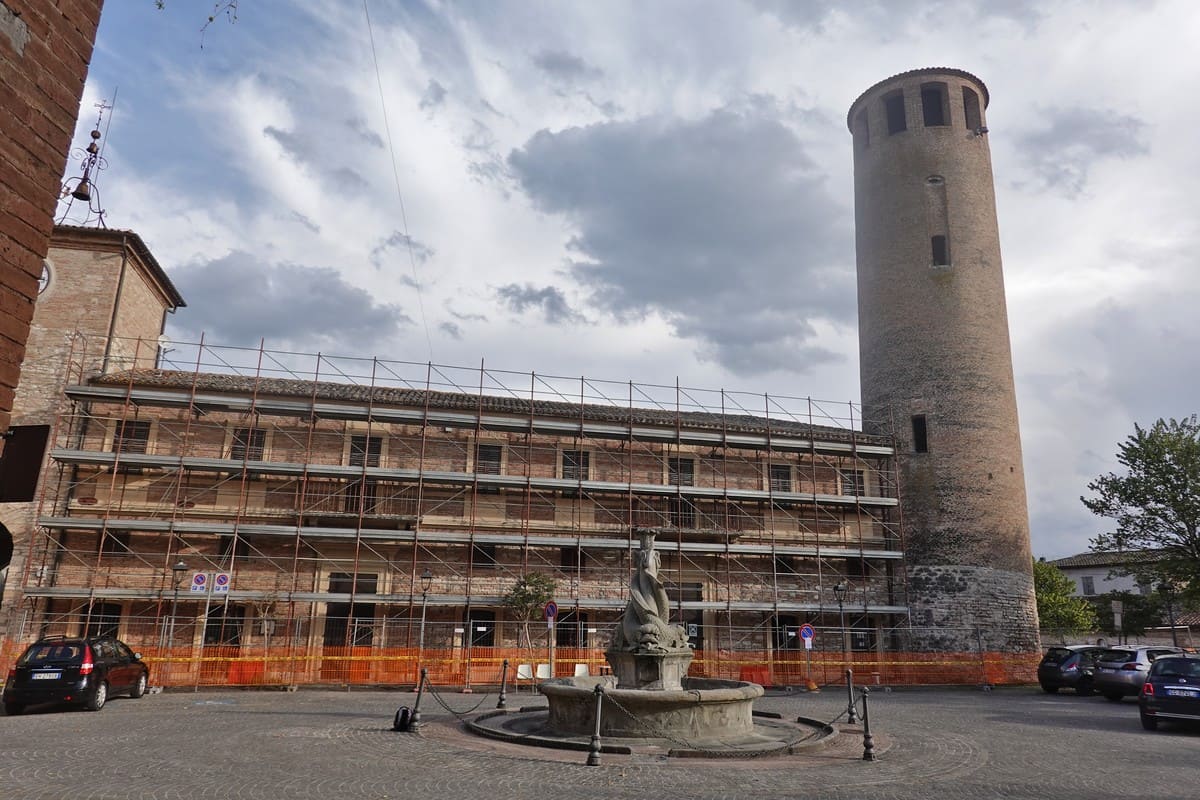
This is where the tour starts where we are told that the Dolphin Fountain is located on one of the 4 water reservoirs in the town. Another one is said to be located near the church on the square, the other 2 have not yet been rediscovered.
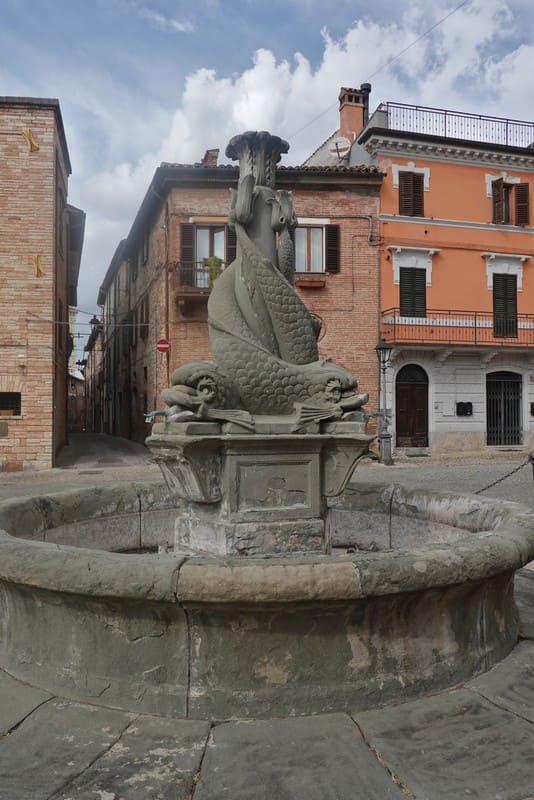
The Belisario tower most likely dates from the 12th century, just like the gate. During the FAI days, the tours are mainly given by high school students so that they also learn something about local history. For example, we learn that the first written testimony of Cerretum dates from 1090. The original inhabitants from nearby Roman Tuficum probably founded a new settlement here on top of a hill. There they found a safer place during their flight from the Lombards. Cerretum refers to cerro or quercus cerrus: the moss oak or Turkish oak that once covered the entire area here.
The tower bears the name of one of the most important Byzantine generals Belisario from the 6th century AD, because in the past it was thought that this general founded this settlement. But today it is known that Belisario never stayed here. The building measures 25 meters high, round on the outside, but square on the inside and the exact date is unknown. The last upper part is said to have been added in the 19th century.
There was also a historic pharmacy on the square! Nowadays it also serves as a tourist office and a small museum for religious objects. An extremely friendly lady let us in and told us about this pharmacy. Before the 19th century, monks and nuns were mainly concerned with herbs and medicines, which is why religious relics, etc. from older churches were placed here. From 1800 onwards, the first doctors and also the first medicines were introduced, none of which we saw in the display cabinets.
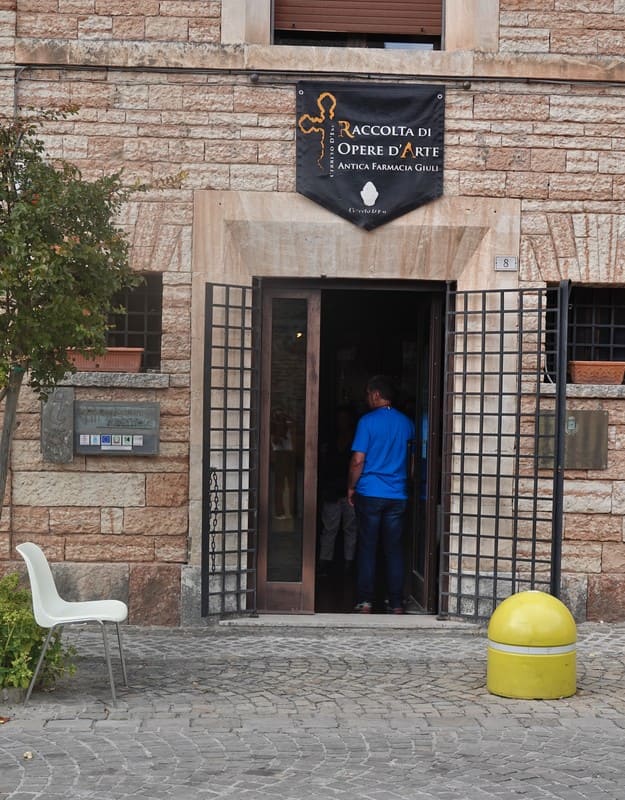

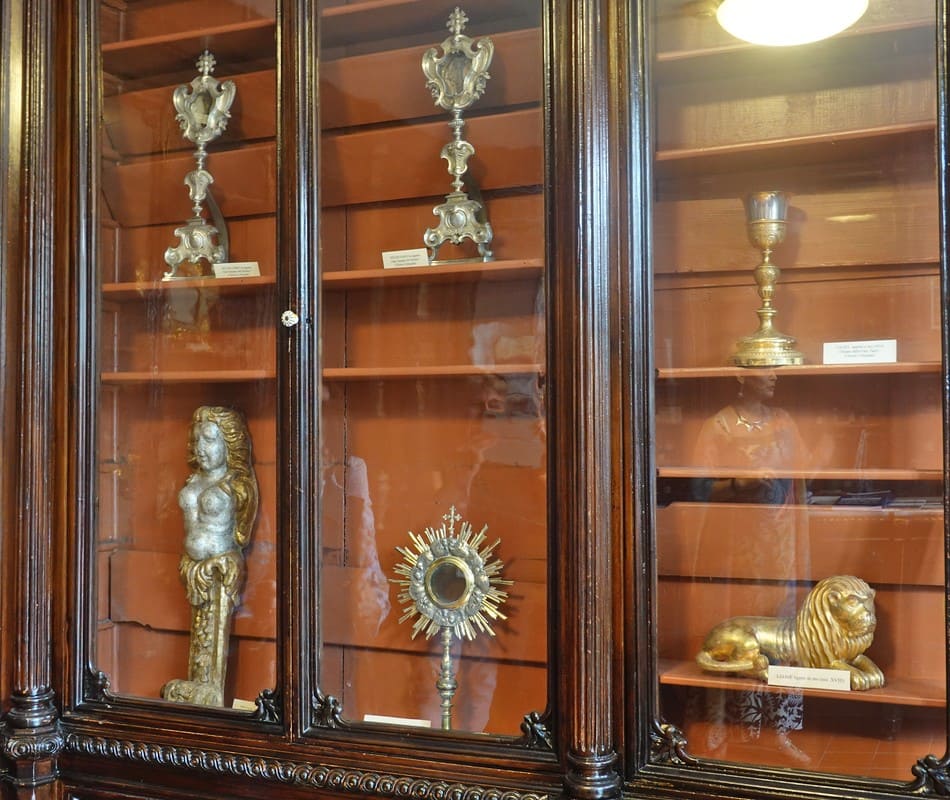

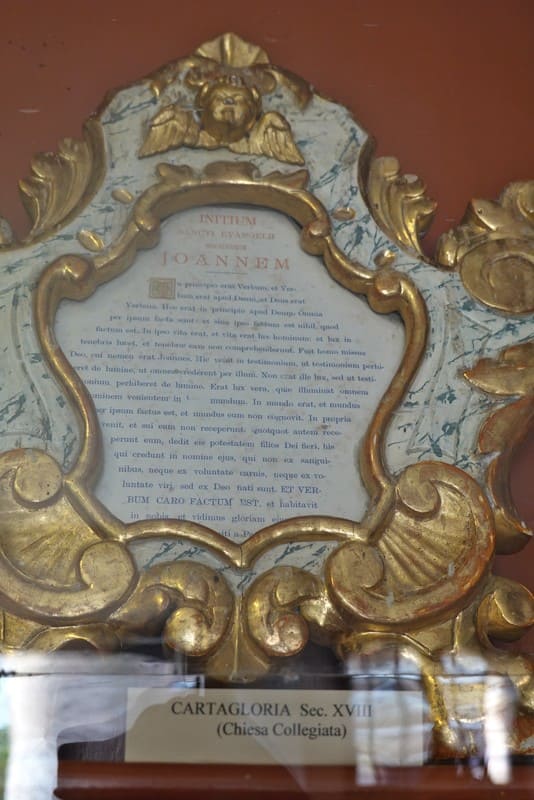


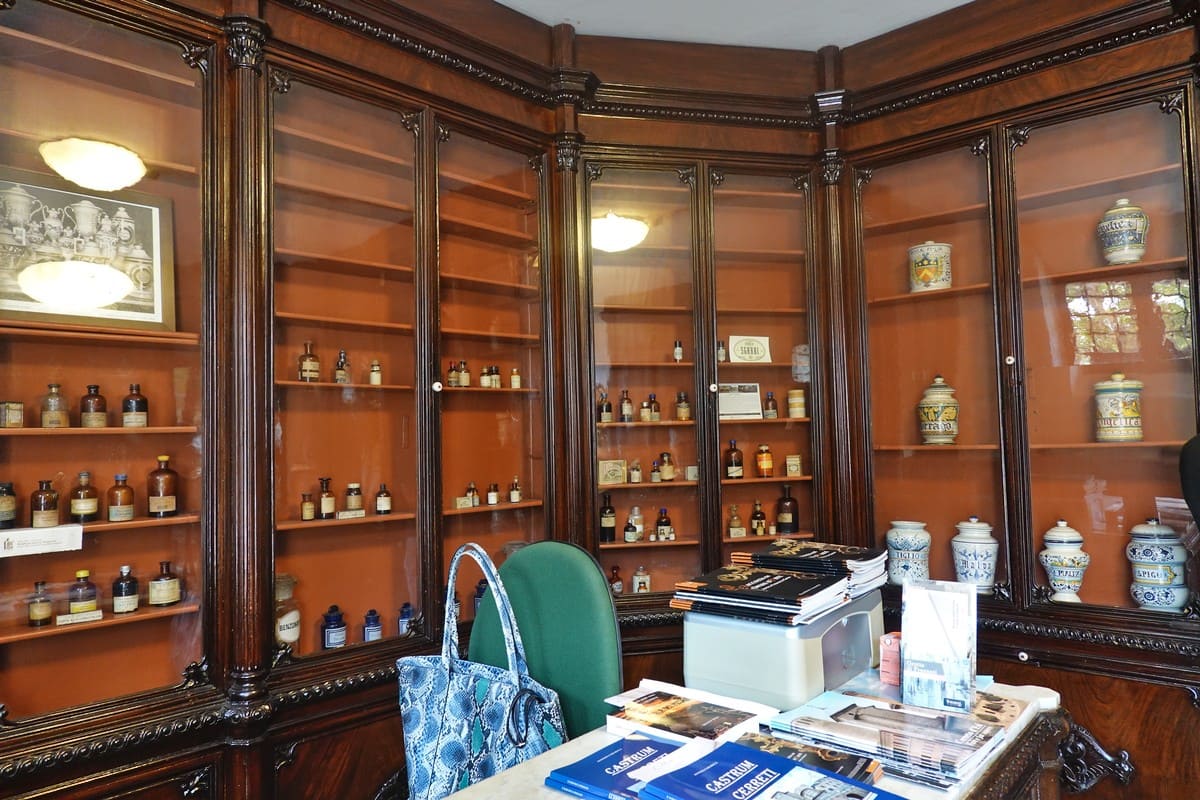
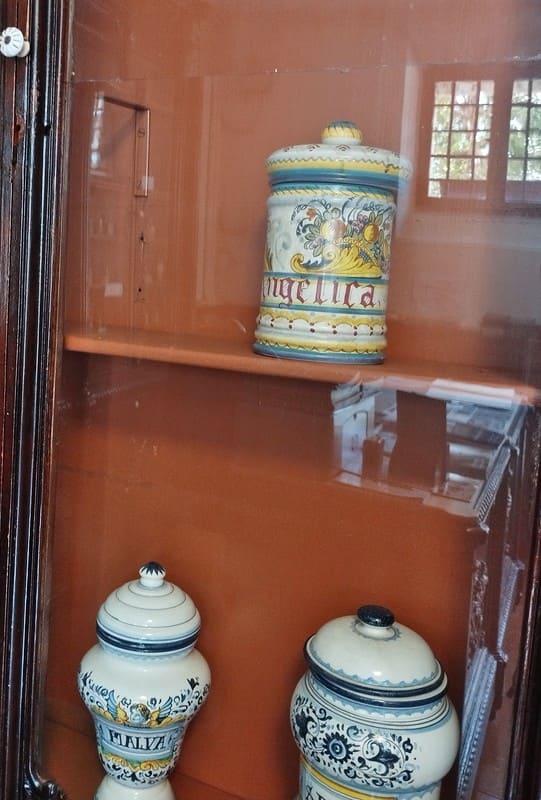
We also saw a Carta Gloria holder, a richly decorated holder for the Gospel portion that the priest would read that day.
We entered the next room with a remarkable cross (15th century) that served as a reliquary.
The friendly lady also explained the paintings on the walls: the Annunciation from the 15-16th century by Luca di Bartolomeo delle Fibbie and the Madonna and Child in the Gloria, between angels, the Archangel Michael and Saint Anthony Abbot. The latter by Ercole Ramazzoni, the painter who still had Lorenzo Lotto as a teacher. (a well-known painter from the Veneto who left numerous paintings in Le Marche) Ercole lived through the late Renaissance period and painted in the style of Perugino and Raphael.

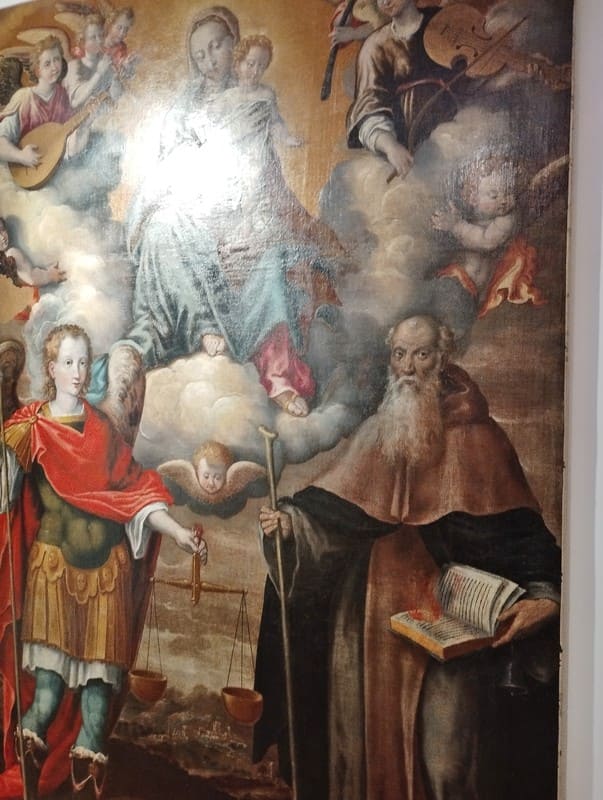
The exhibition spaces turned out to be very small and not ideal for taking photos… the next group had already announced themselves. In any case, if you want to see all the beauty, you can go there on the following weekdays: Monday, Tuesday, Wednesday and Friday from 10 a.m. to 12 noon.
As a surprise, the lady all gave us a booklet with a full explanation of all the works of art on display.
The next students were already waiting for us to walk via the Santa Maria Chiesa della Piazza and Via San Lorenzo towards the retirement home: an old villa that has served various functions over the centuries.
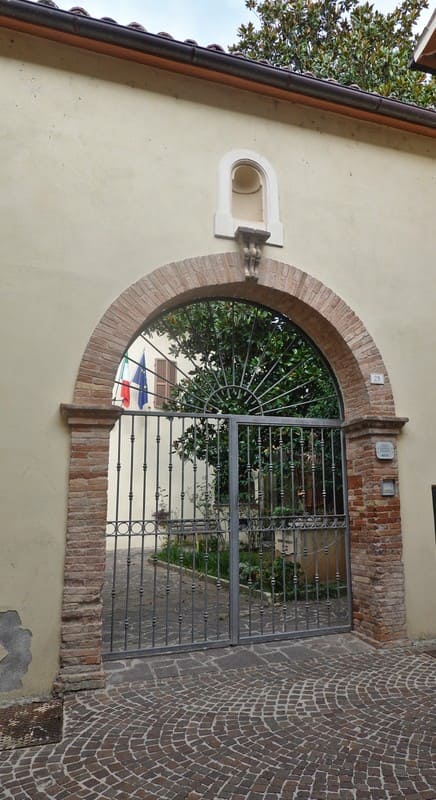
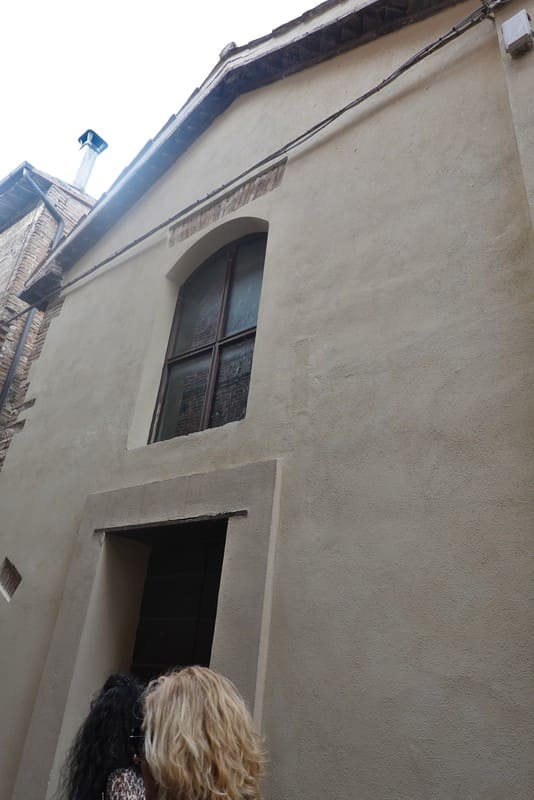
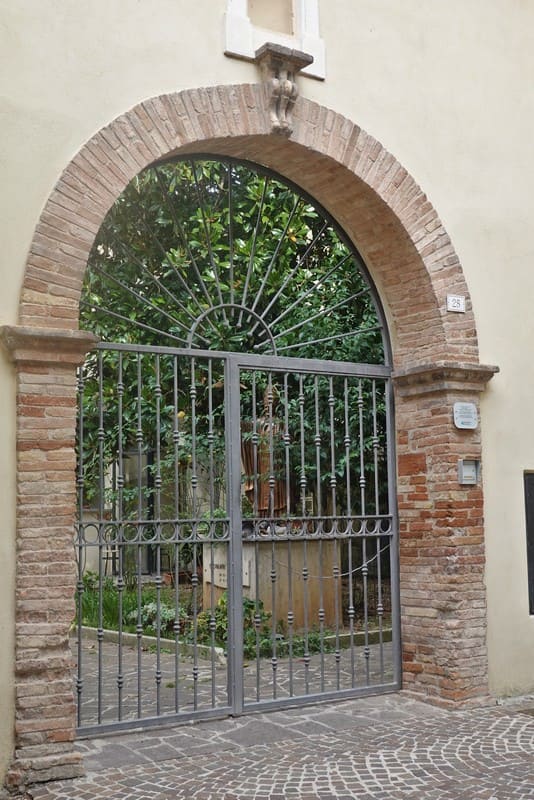
Finally we arrived at the Via Tribbio, a very important road, which already formed a crossroads of 3 roads during the Roman period. Hence the name.
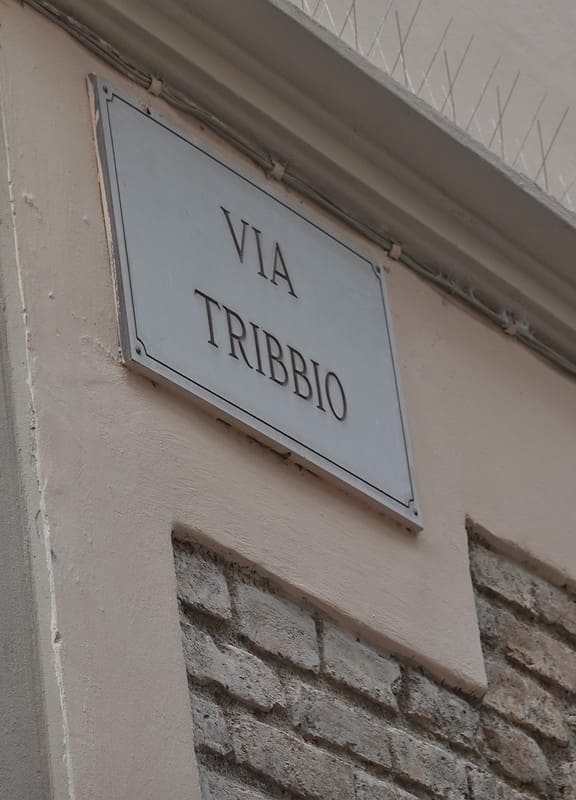
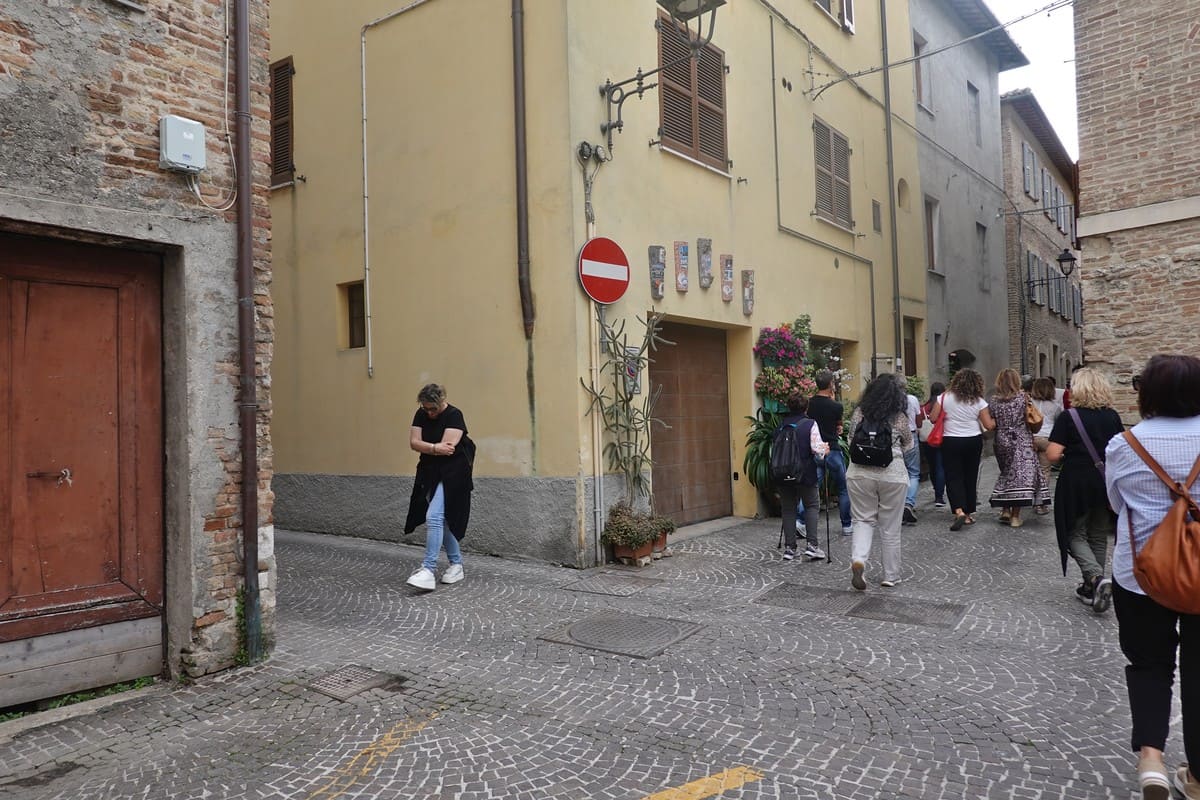
While strolling we noticed that there were many vacant houses; this is said to have happened after the 2016 earthquake. Because it was only now that the reconstruction funds were released. Hence the numerous scaffolding around the buildings. Still, some residents (around 3500) tried to make something fun of it.
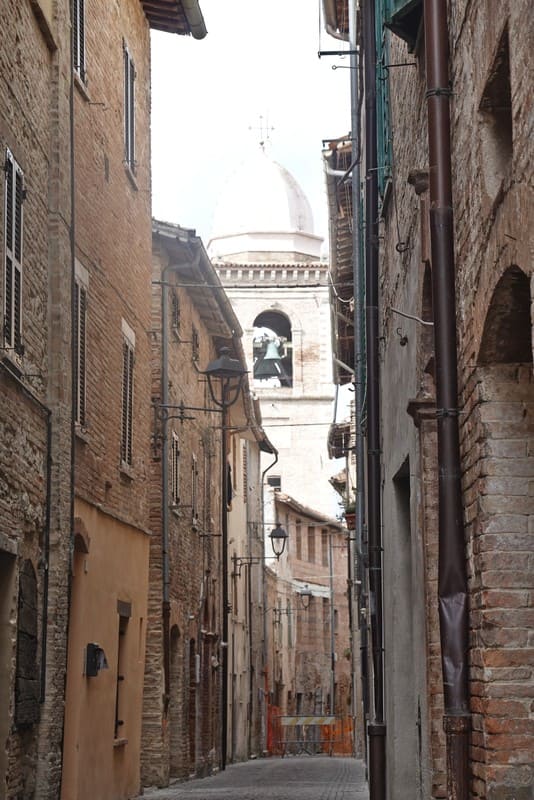

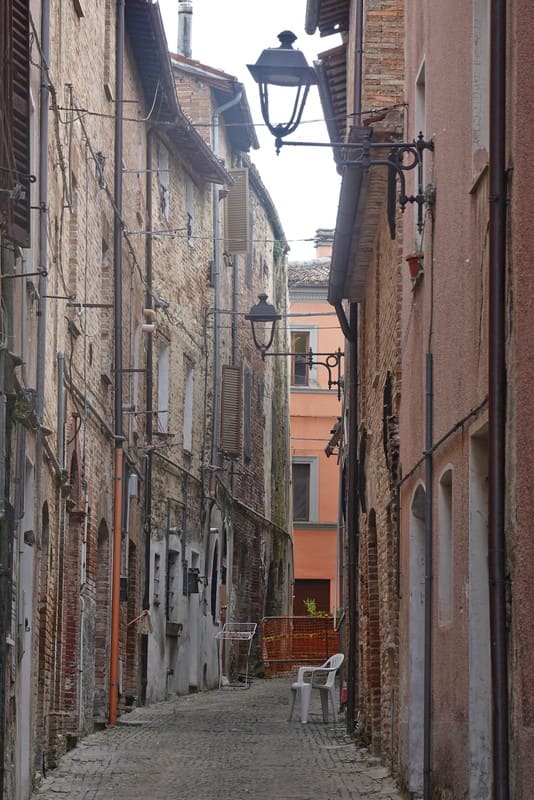

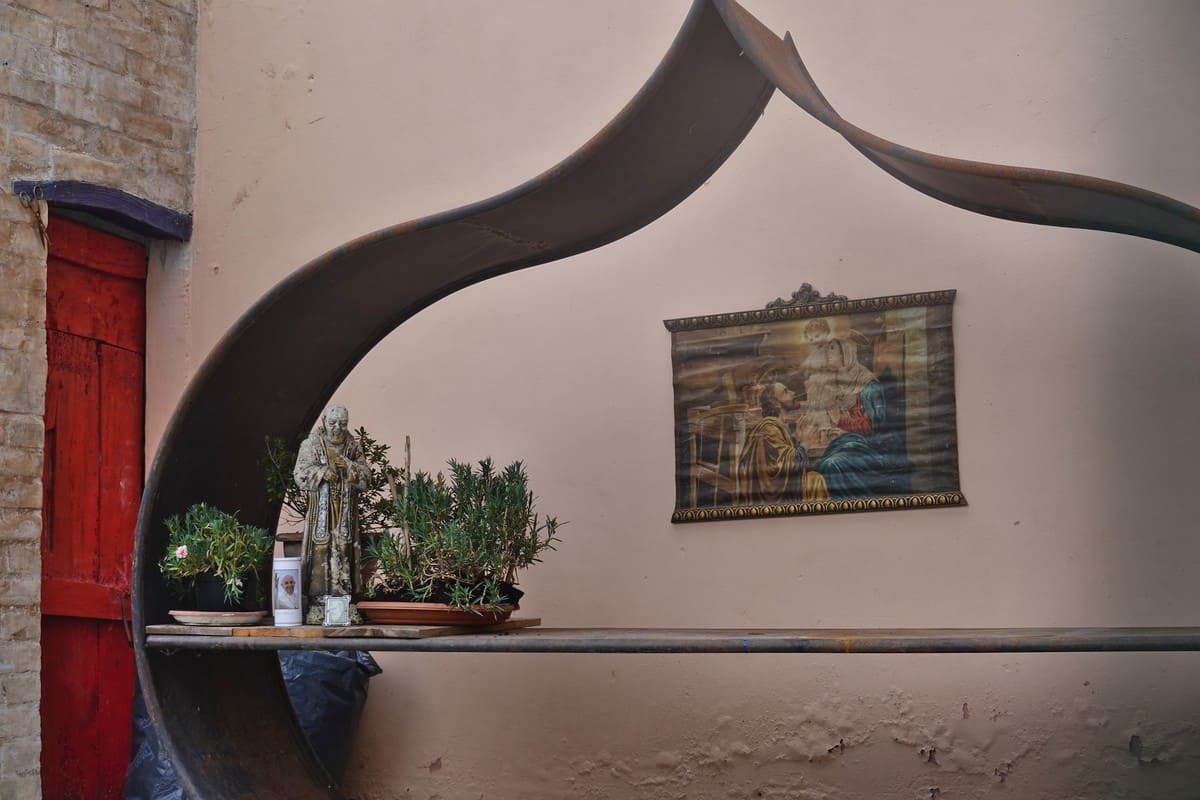
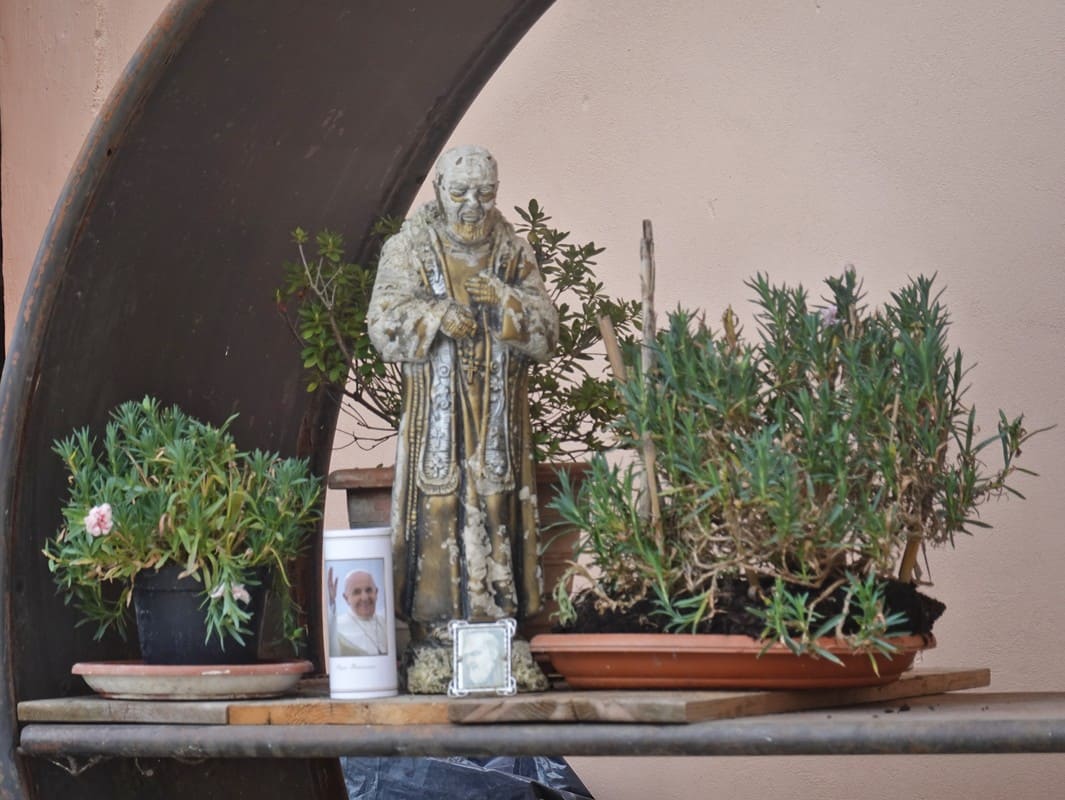
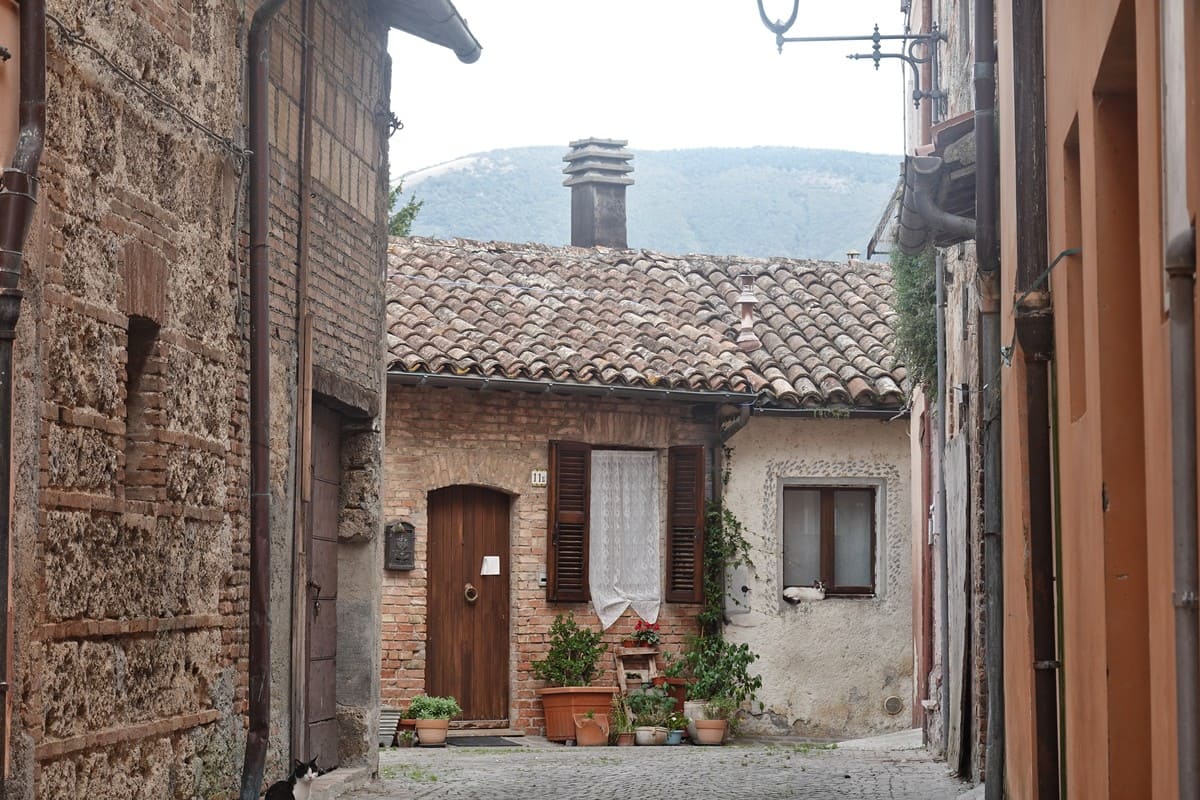





The numerous cats apparently also enjoyed Cerreto D’Esi:
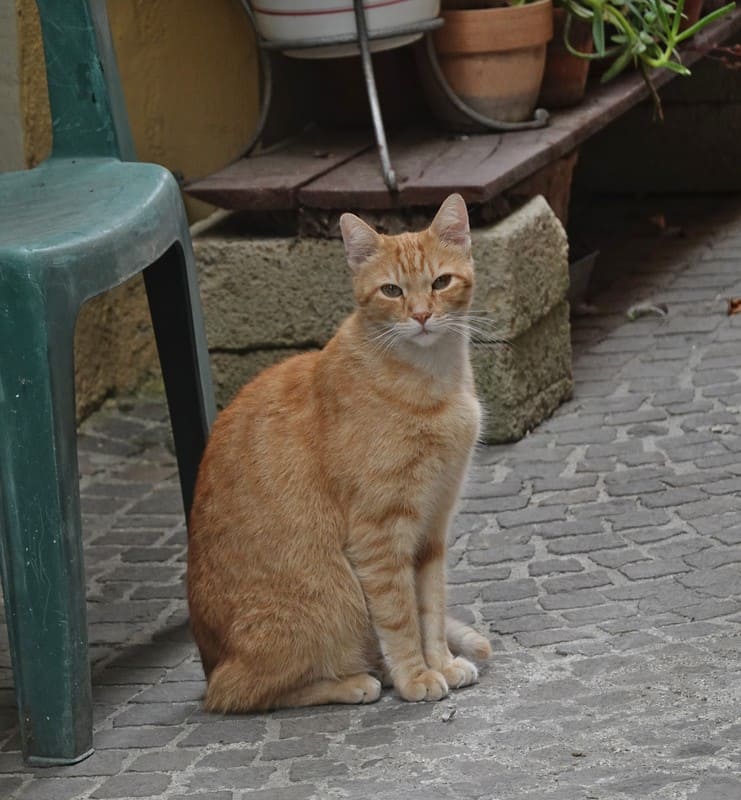
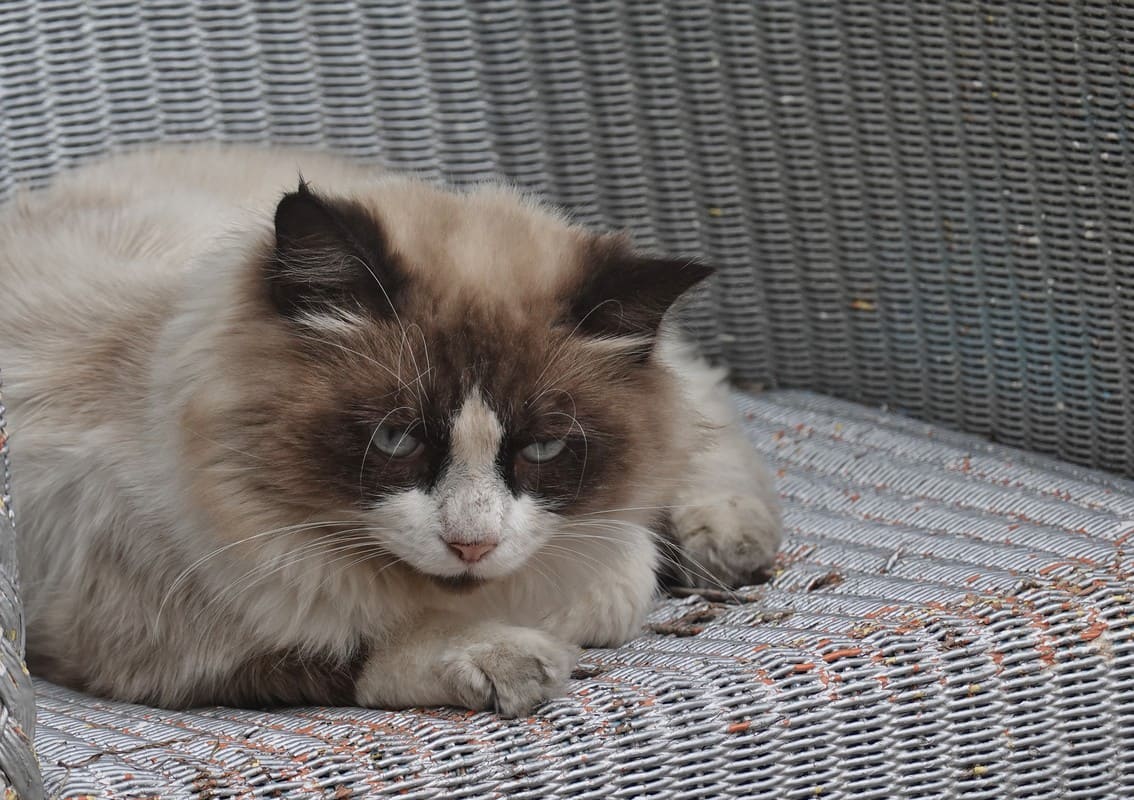

In Via Roma we entered a building where we saw from the outside that the entrance had once been different.
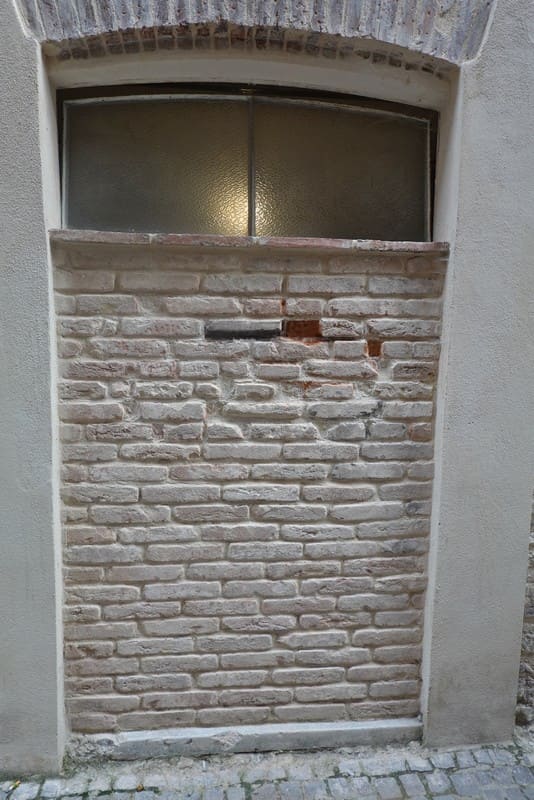
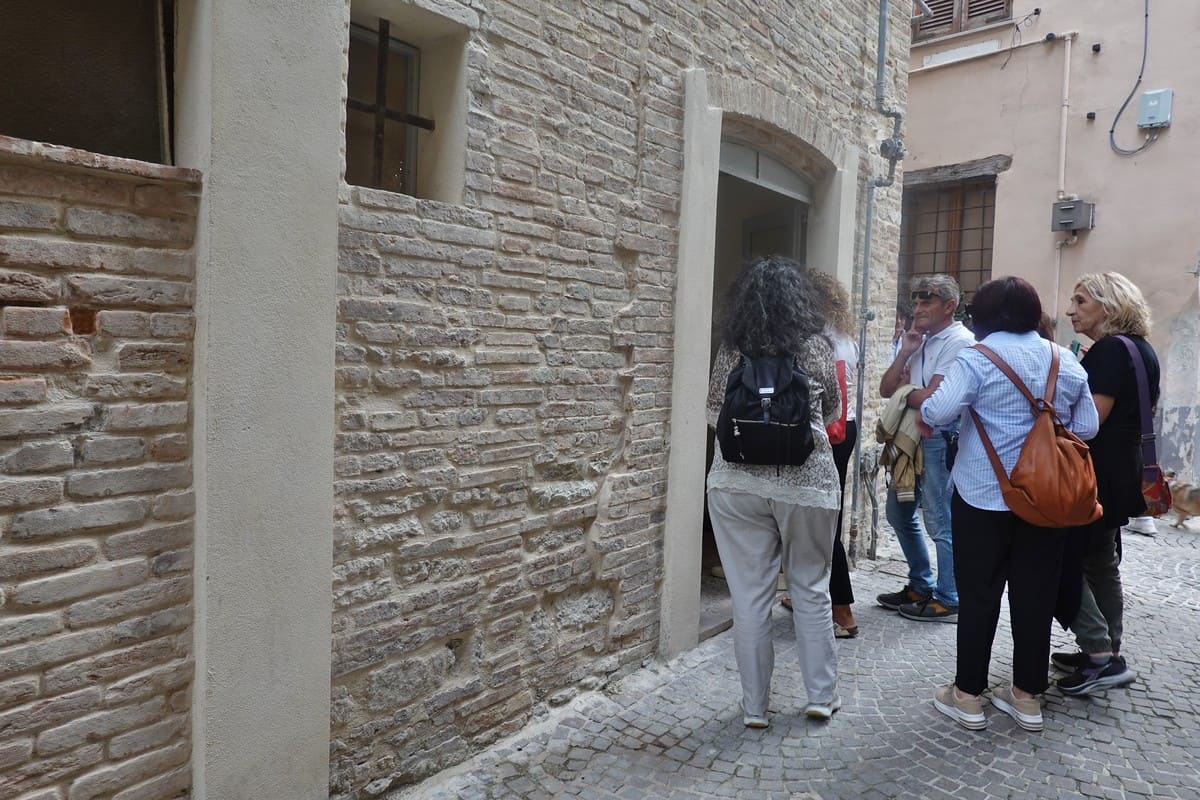
It turned out to be the old bakery belonging to the Tacconi family, who emigrated to Brazil at the beginning of the 20th century, but soon returned, because their bakery did not catch on. We saw the rooms where the oven used to be, a beautiful photo reminded us of the old times. Then we saw the following ovens, the wooden pallets, the old mixer and other utensils. Sometime in the 1980s the family called it quits.
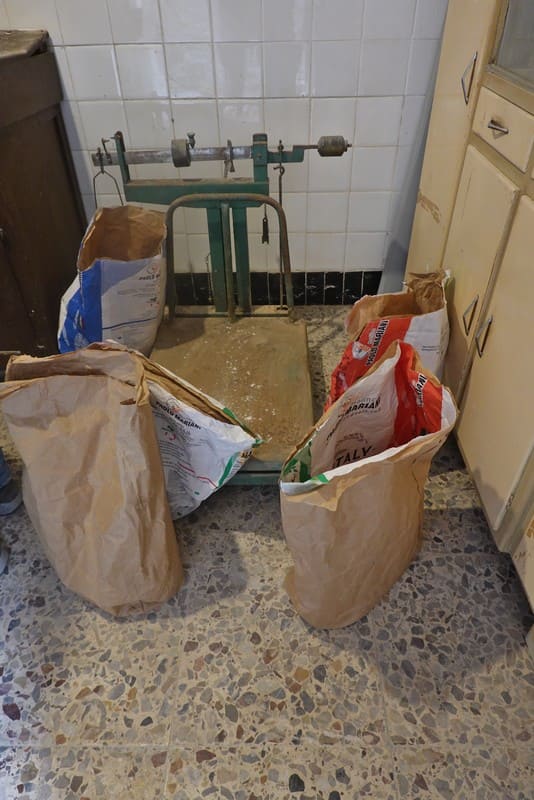
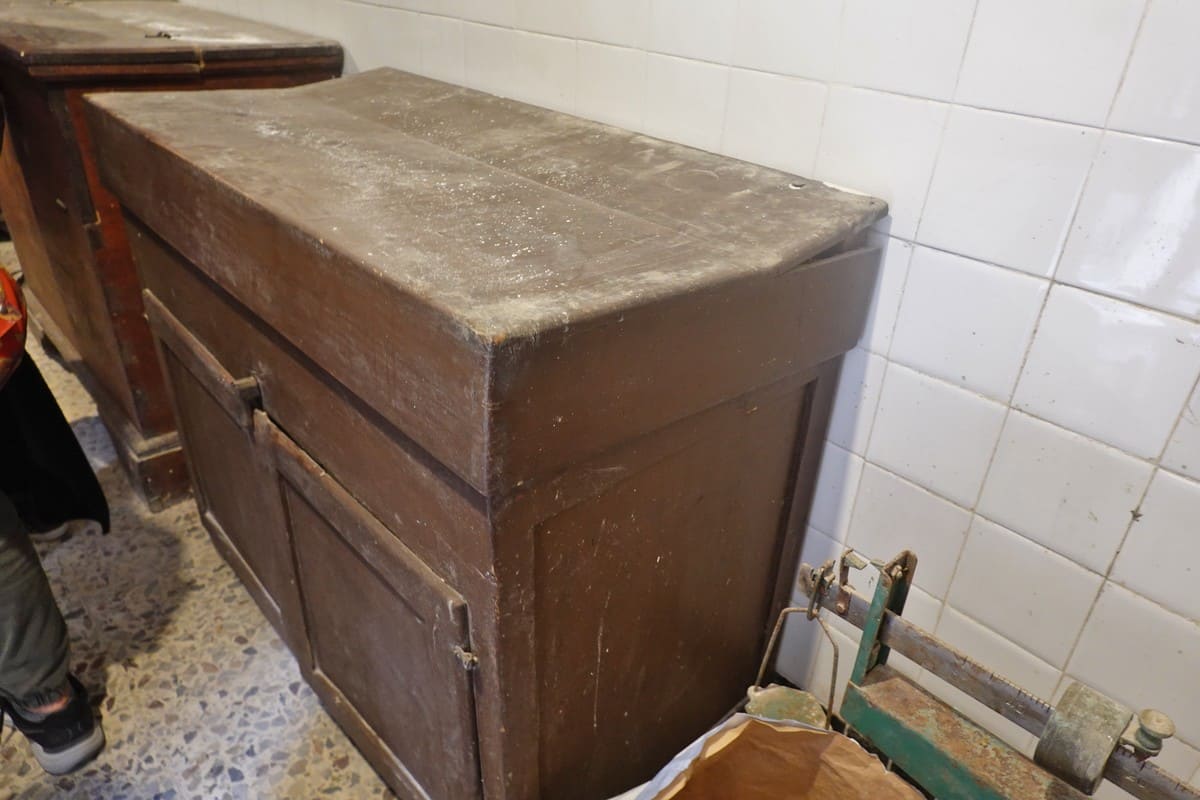
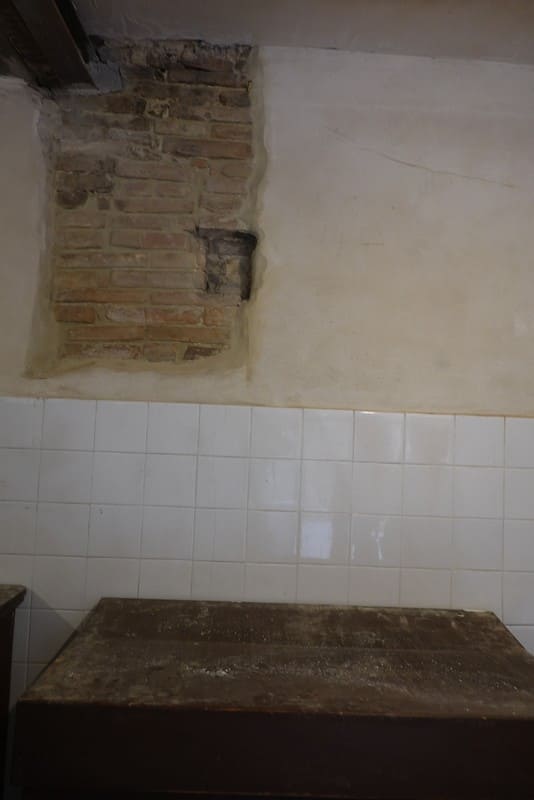
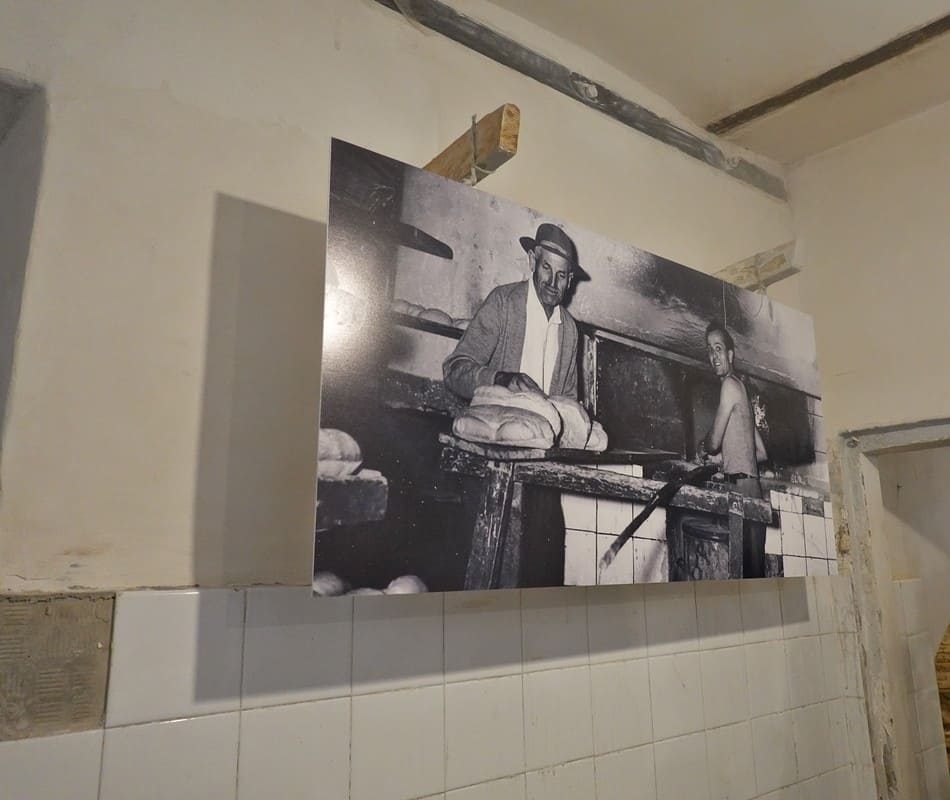
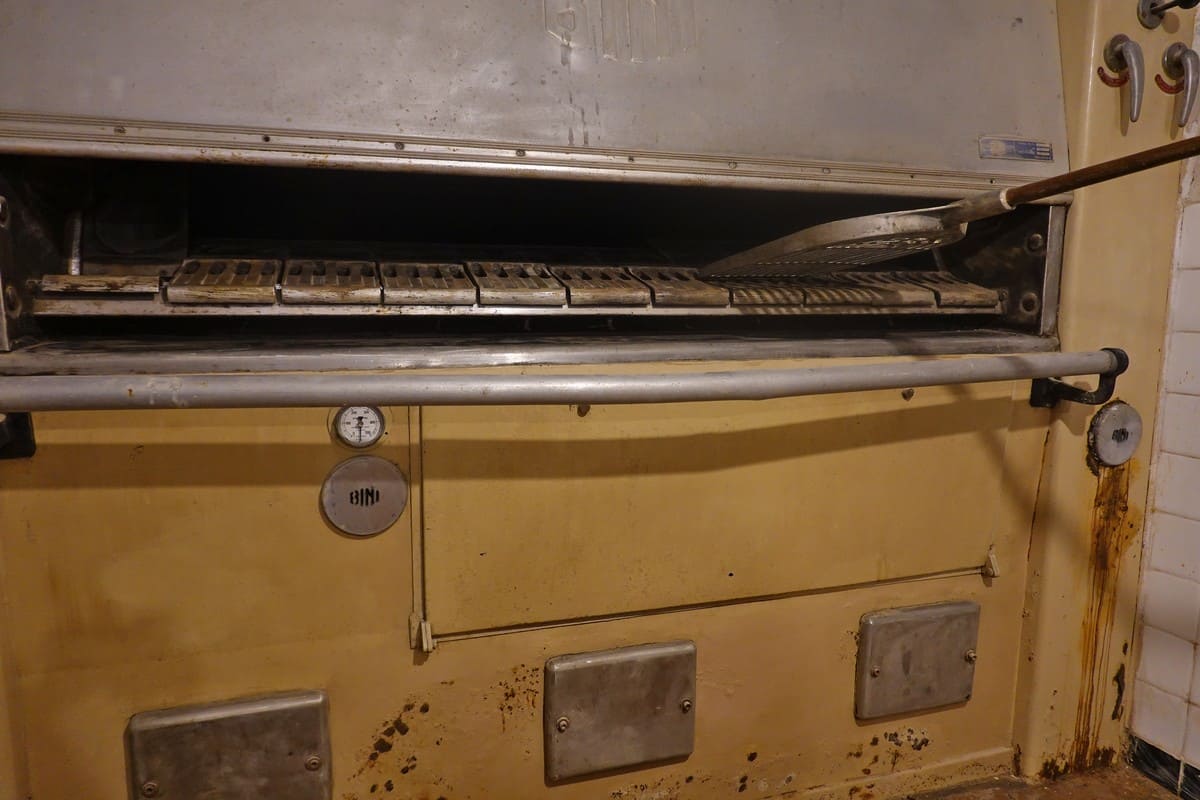
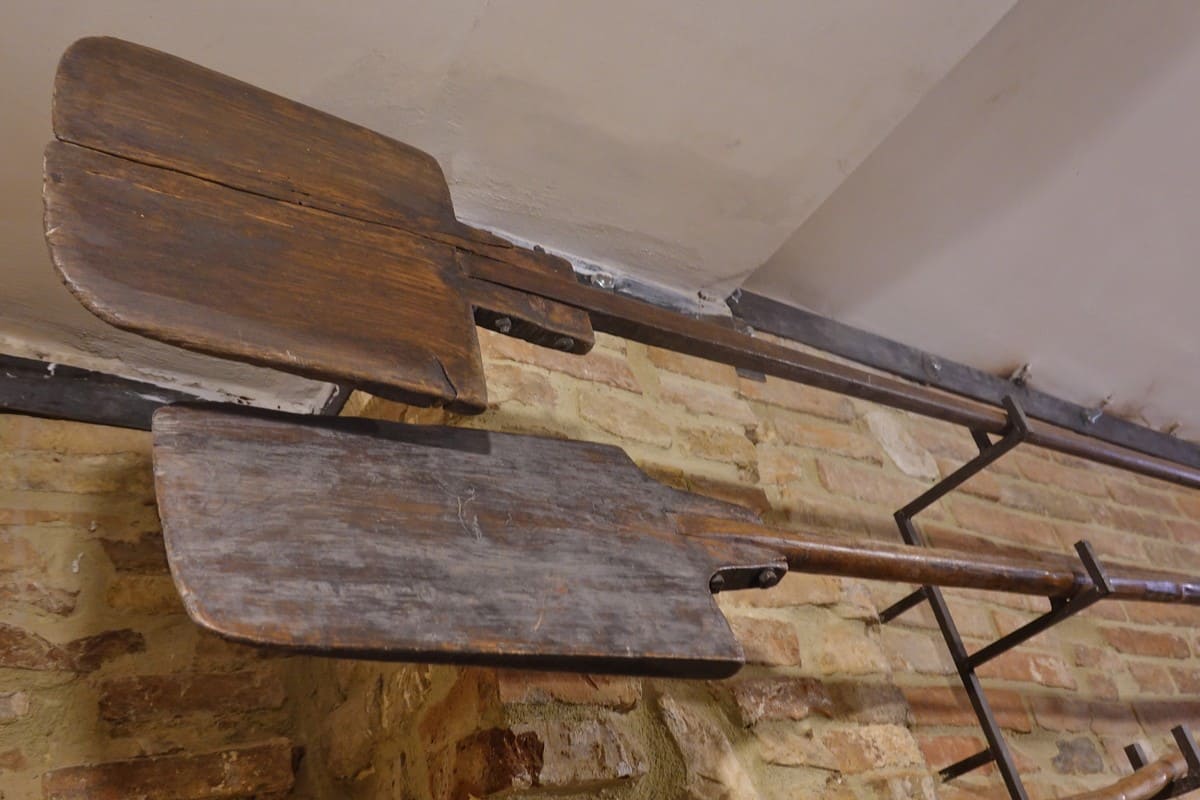
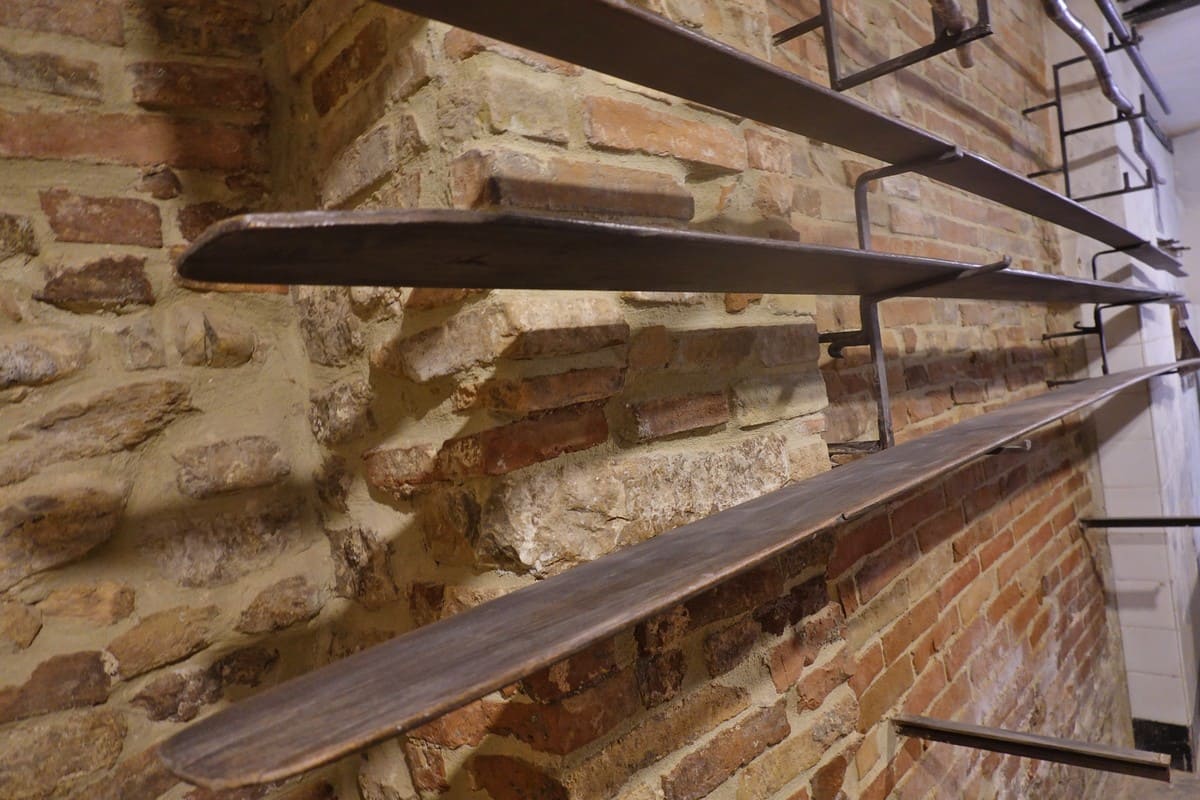
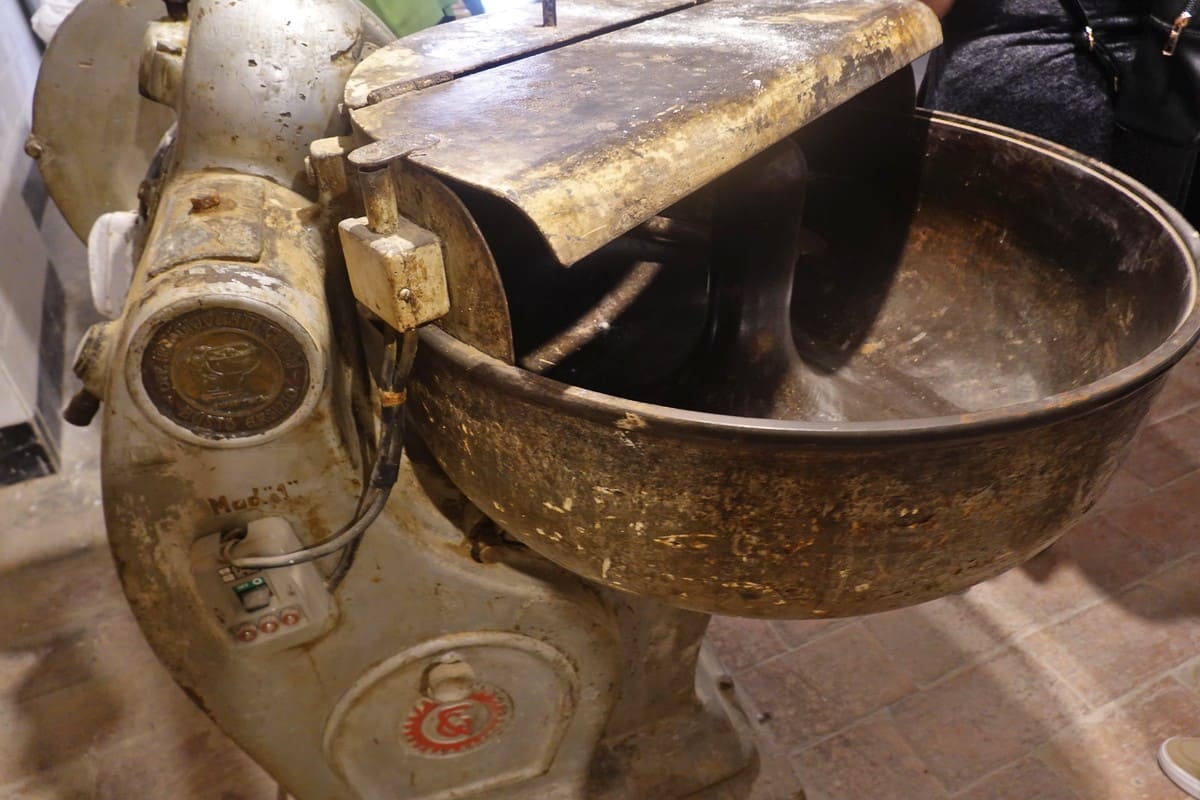

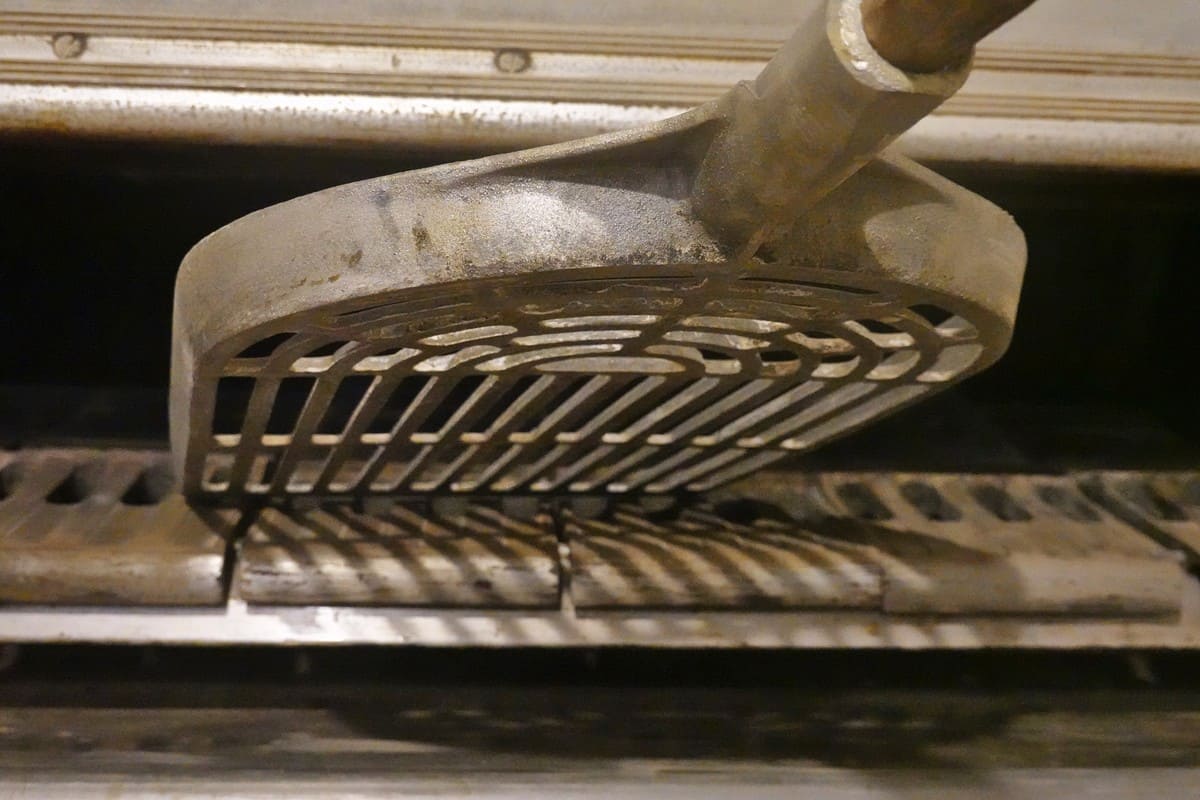

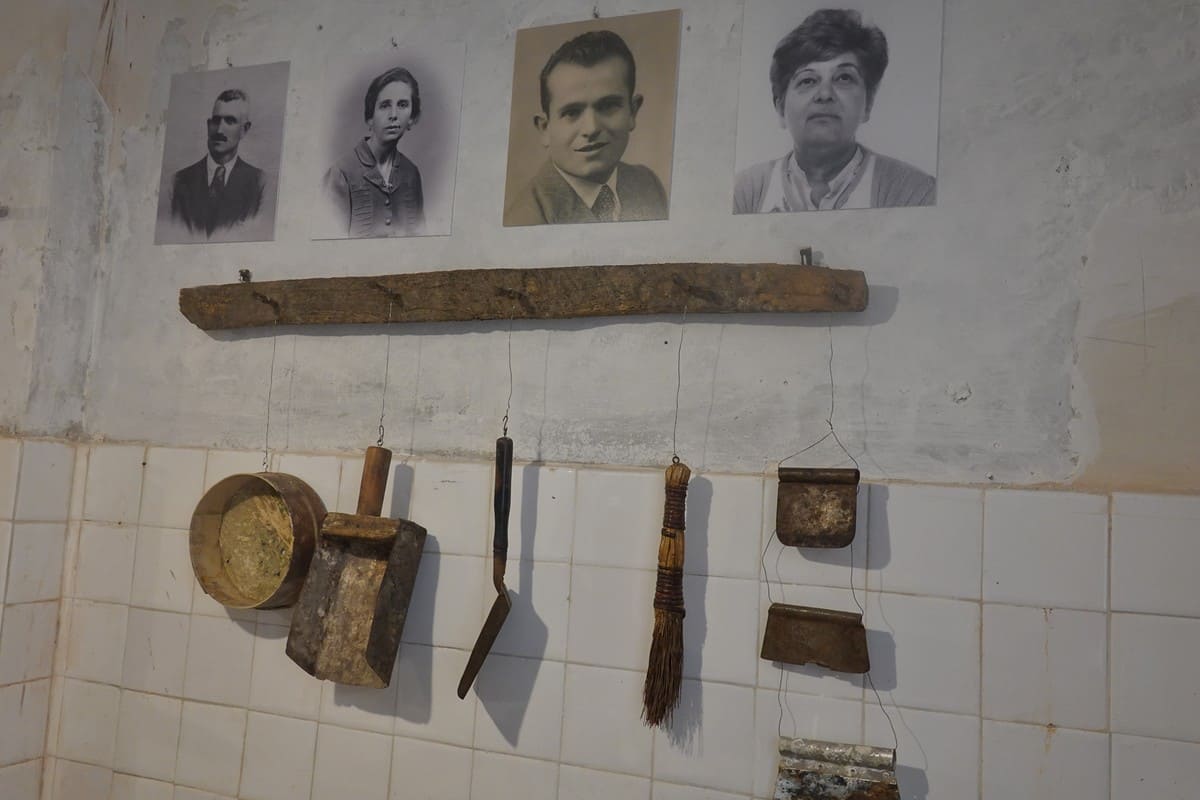
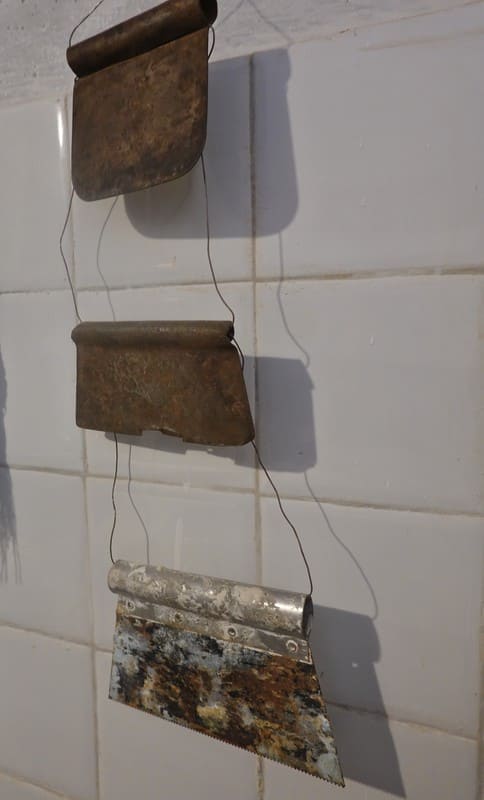

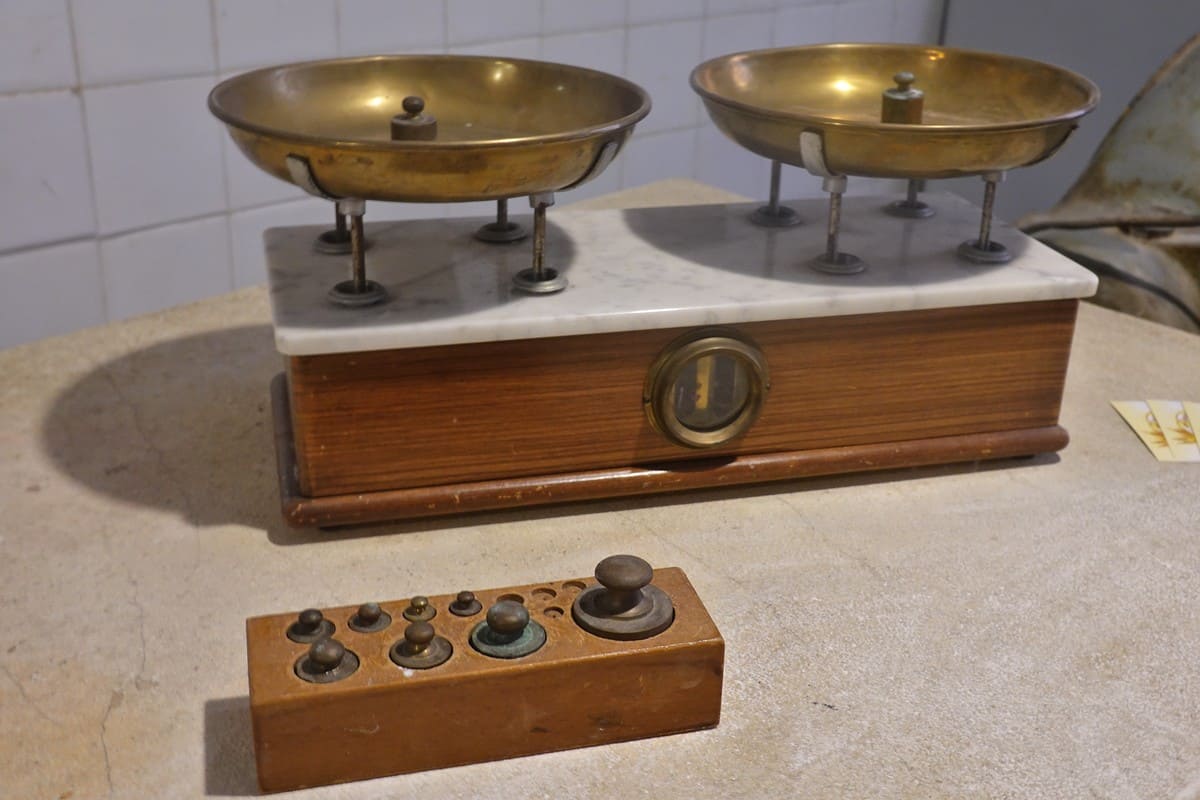
There were also recipes posted and a modern baker had made a foccaccia for us. That was delicious.
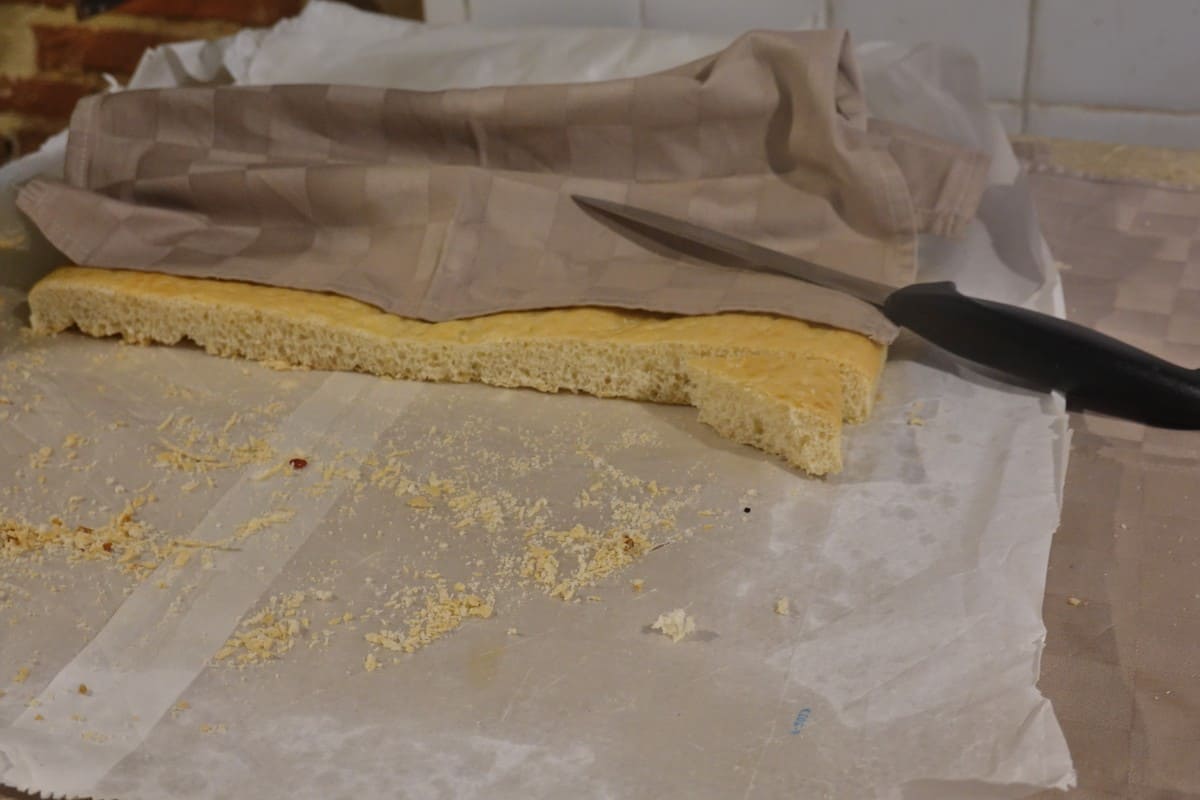
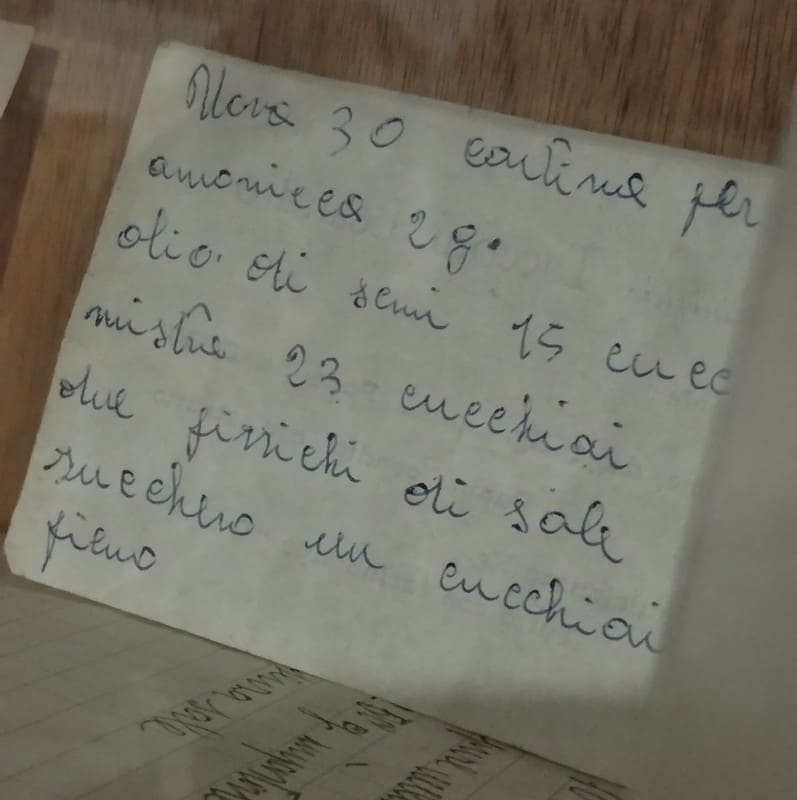
We now ended up at the back of the old city wall, where the 2 nd gate once stood, which had unfortunately disappeared. We had a view of the station and the hills where the Fabrianese once fought fiercely against those of Cerreto. Often those of Cerreto lost their independence and became part of Fabriano again. In 1859 Cerreto was finally allowed to call itself an independent municipality and add d’Esi to it, because it is close to the source of the important Esino River.

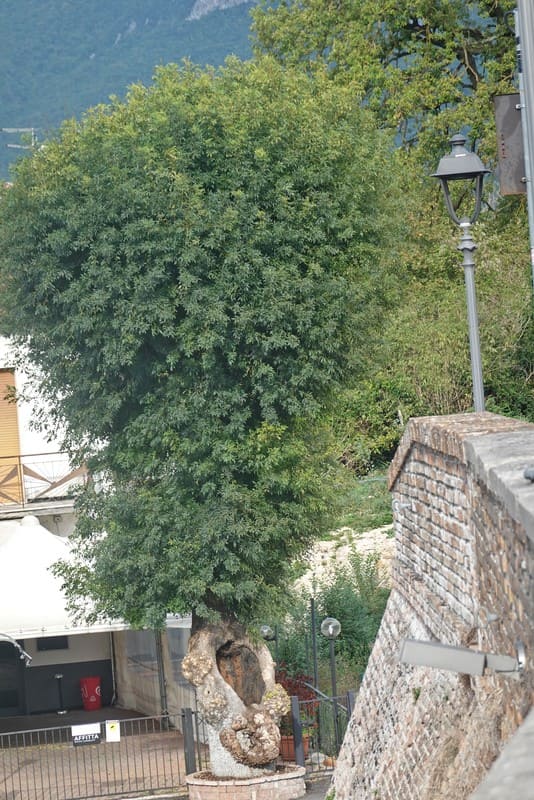
Here we also saw the oldest Cerreto or moss oak in the municipality. The exact age was unknown. But if it ever died, a young specimen was now planted in the moat at the entrance to the town.
We now walked along the city wall to the left to arrive at a square where the Collegiata of Santa Maria Assunta stood. Originally built in the 13th century, the remains of which we saw on the side.
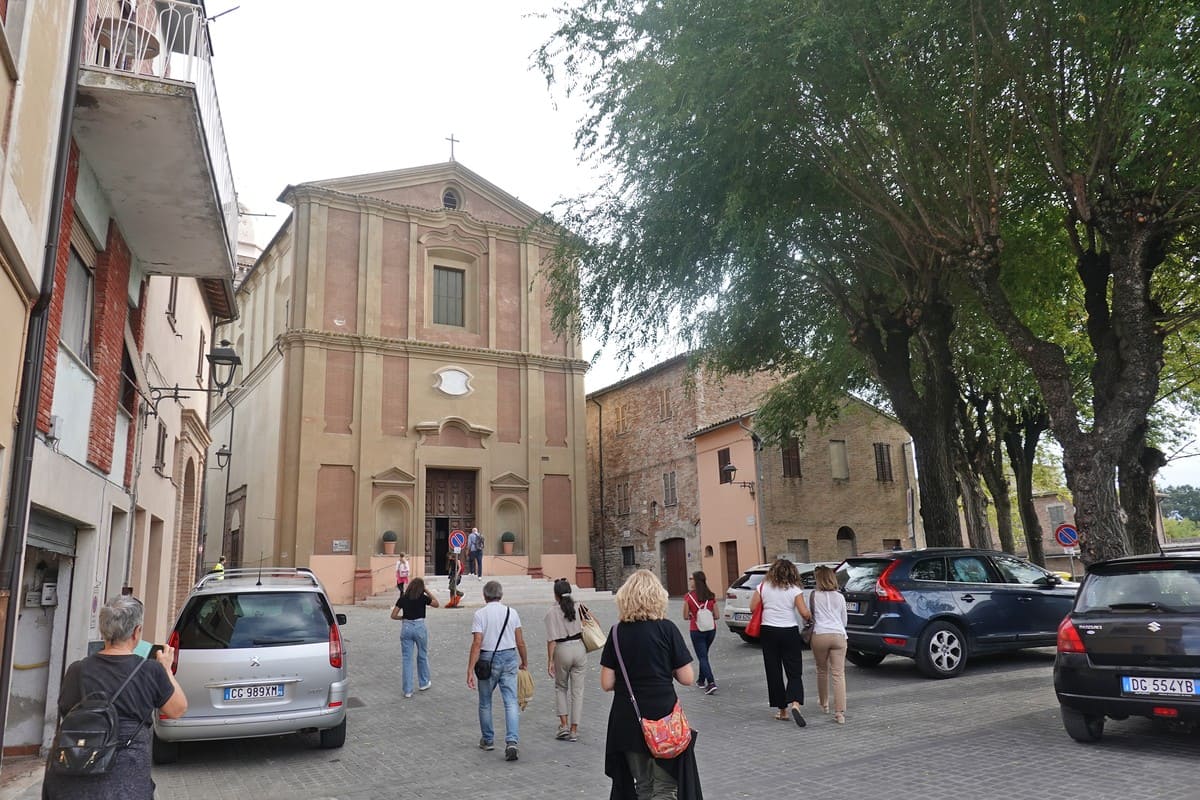


The facade itself was painted in remarkable colors during the restoration after the 1997 earthquake.
The church was renovated and enlarged in the 17th/18th century. The interior was really surprising, lots of light and beautiful colors that made it beautiful and balanced. An elderly volunteer gave us the explanation, but to his great regret he could only give us a limited explanation as the next group was already outside. Imposing statues of the 4 evangelists made of stucco, as well as a beautiful statue of Mary breastfeeding Jesus above the altar.
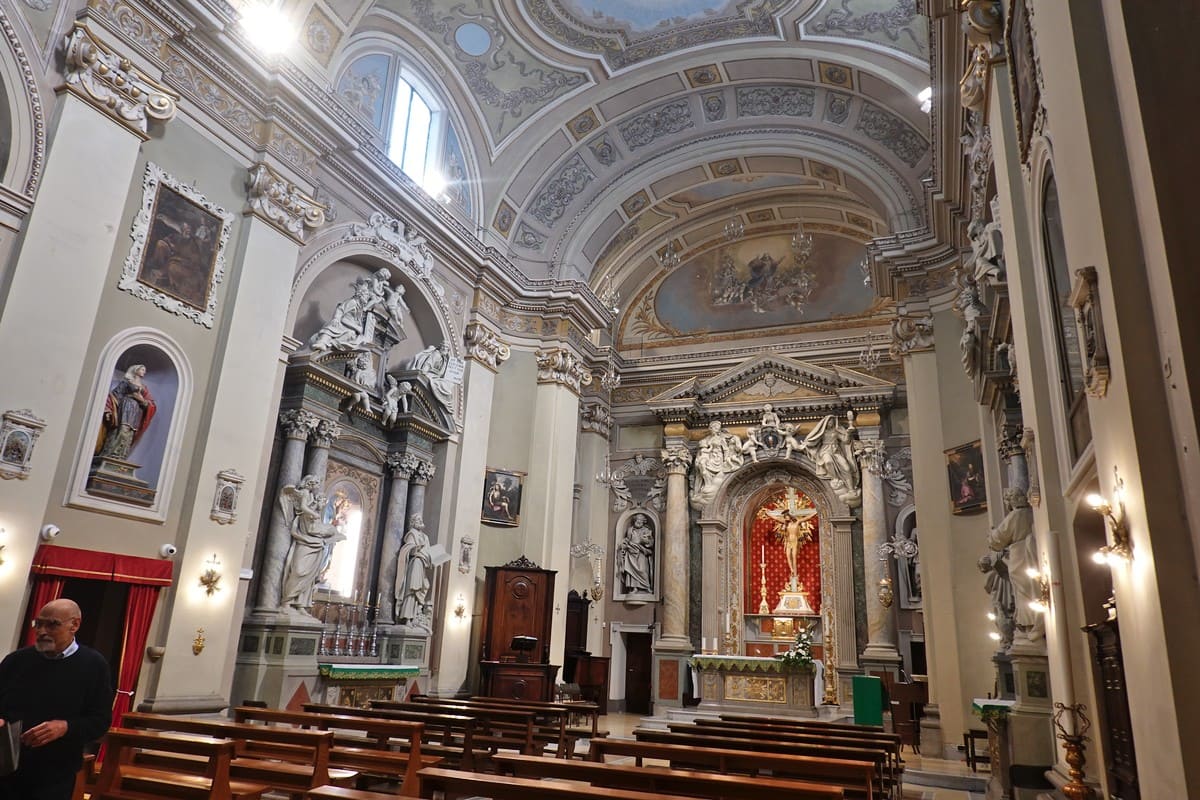
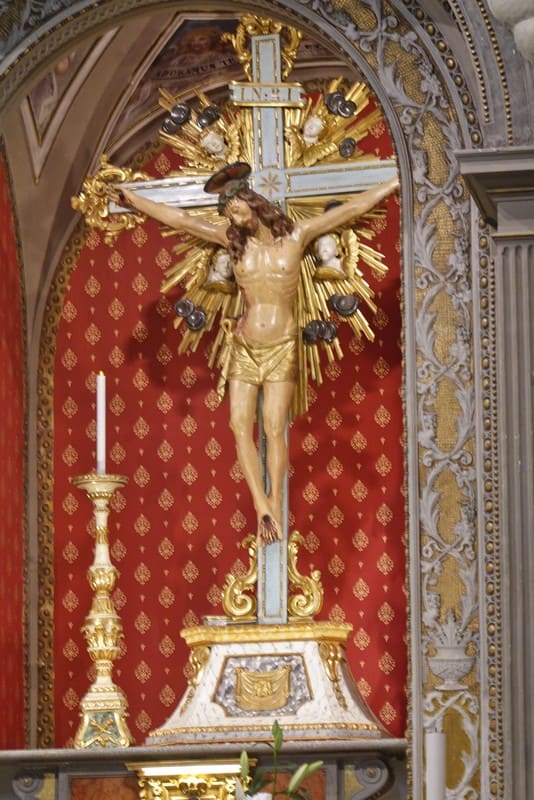
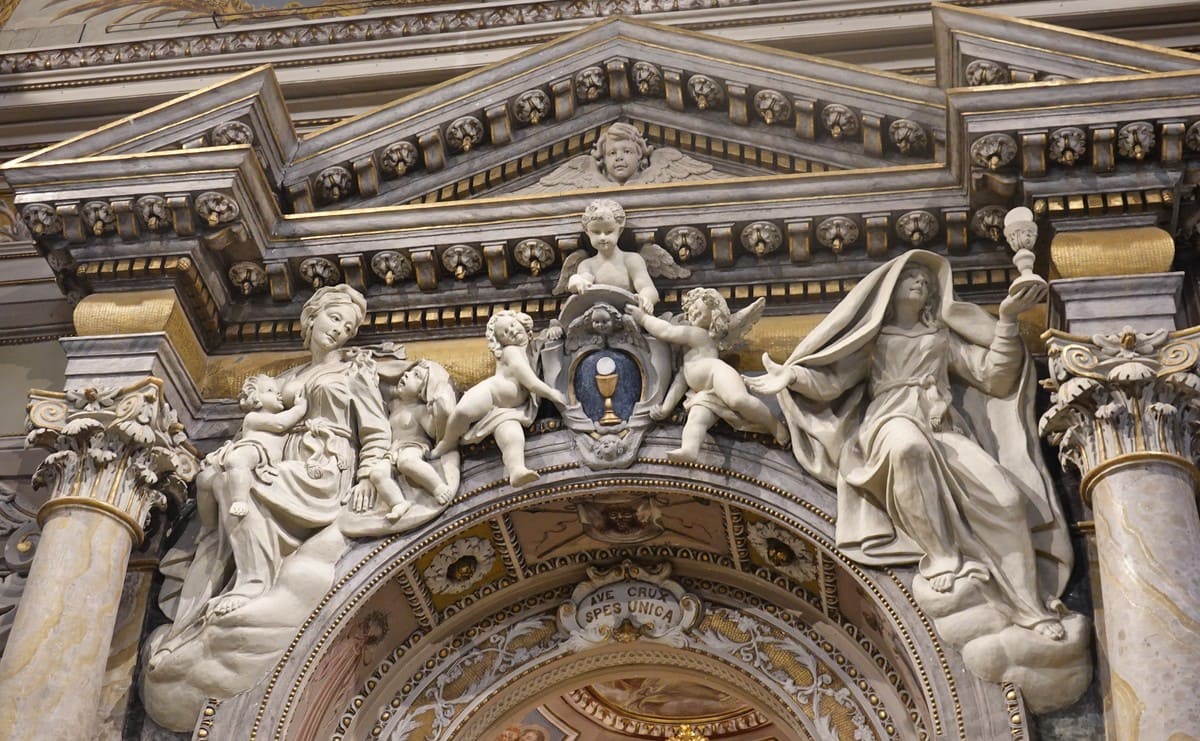

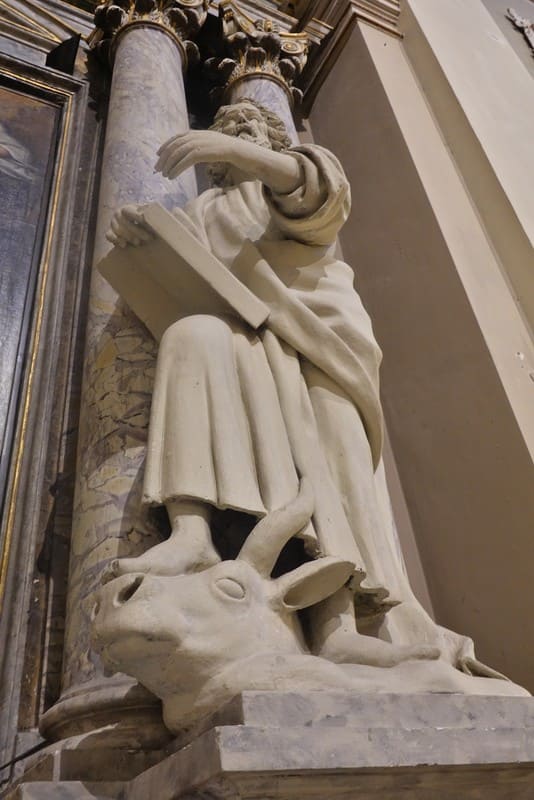
The tour ended here. Very interesting and learned a lot. On Sundays, the 2 bars on the outside of the city walls were closed, but if you come during the week, you can certainly go there!
The city is also known for its wine festival, the Verdicchio de Matelica. These always start in September, followed by the wine festivals in Arcevia and then conclude with the largest and oldest Marchigian wine festivals in Cupramontana.
Unlike the Verdicchio dei Castelli di Jesi wine hills, the Verdicchio di Matelica vineyards do not receive any influence from the sea. The wine therefore tastes much more powerful.
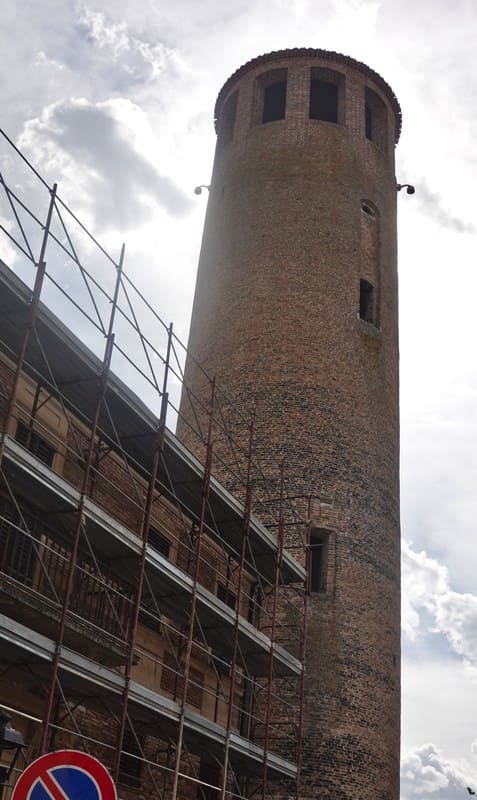
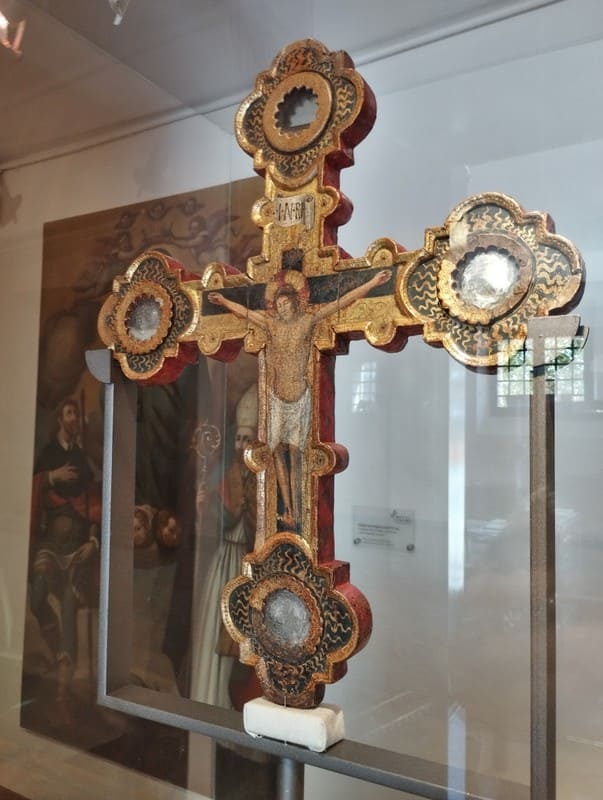
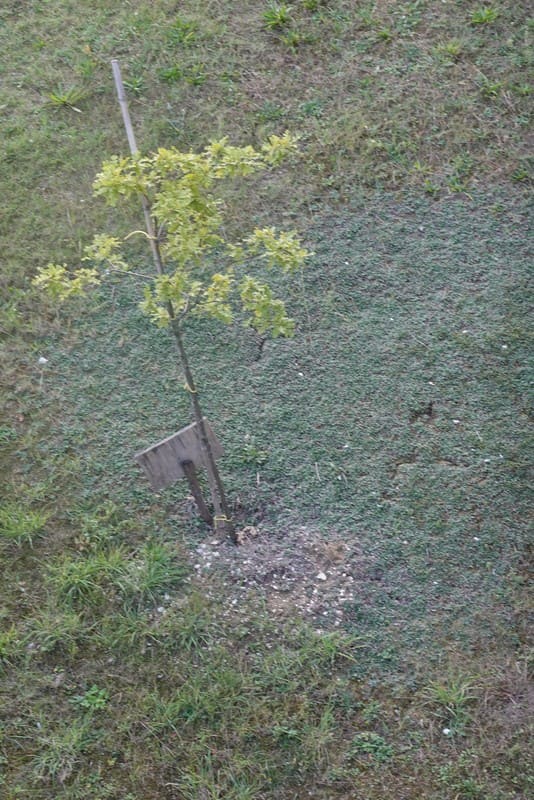
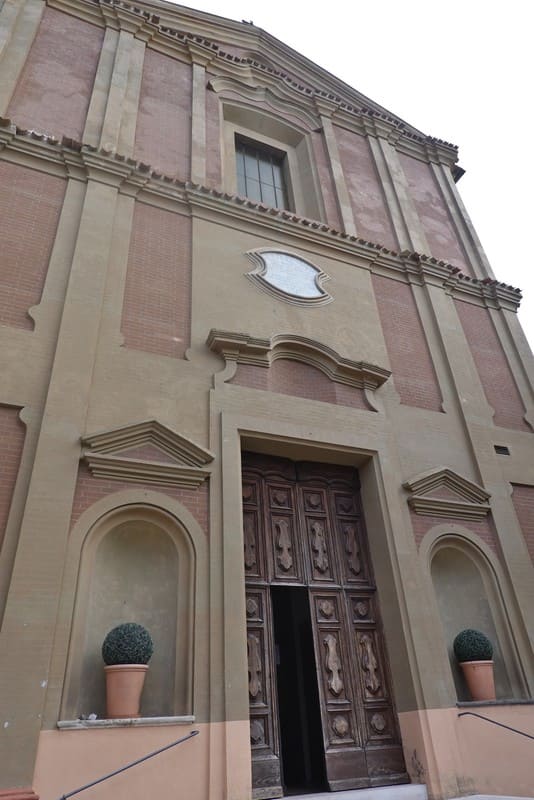
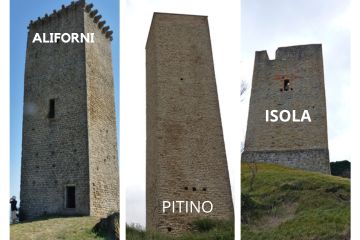
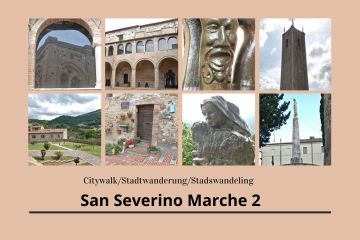
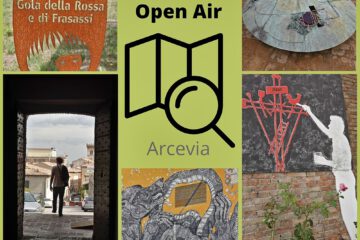
0 Comments